#enrich fantasy storytelling
Explore tagged Tumblr posts
Text
Navigating the Depths: Fantasy Writing Lessons from 'Moby-Dick'
In the vast ocean of fantasy literature, where authors chart courses through realms of the extraordinary, classic literature can offer a guiding star. Herman Melville’s “Moby-Dick,” a seminal work renowned for its thematic complexity, rich symbolism, and profound character study, provides a treasure trove of insights for fantasy authors. Let’s embark on a voyage with Captain Ahab and the crew…

View On WordPress
#character development guide#classic literature influence#complex characters fantasy#enrich fantasy storytelling#exploring literary themes#fantasy author guide#fantasy genre insights#fantasy narrative craft#fantasy writing inspiration#fantasy writing skills#genre blending techniques#Herman Melville writing#literary analysis skills#literary symbolism#Moby-Dick for writers#Moby-Dick lessons#setting importance fantasy#thematic depth literature#world-building tips
1 note
·
View note
Text
Let's talk about writing fantasy.
Fantasy is one of my favourite genres, to read and to write. But the worldbuilding required and the existing tropes can make it difficult to craft a unique, compelling novel. There are a number of less-discussed nuances that might not always be at the forefront of writing discussions. Here are some tips to help you out:
Ground it in reality: Even though fantasy allows for boundless imagination, grounding your world in elements familiar to readers can make it more relatable and believable. Making it too otherworldly can make it difficult to understand or follow, and will likely make it much more difficult to interweave the explanation of your world and its society into the text seamlessly.
Consistency: Fantasy worlds can be complex, with their own rules, magic systems, and histories. Ensure consistency in your worldbuilding, avoiding contradictions or sudden changes without explanation. I find it helpful to keep a world bible or notes to track details and maintain coherence throughout the story.
Character-driven plots: While epic battles and magical quests are exciting, don't forget that compelling characters drive the heart of any story. Develop multi-dimensional characters with strengths, weaknesses, and personal arcs that resonate with readers (see my post on character development for more).
Avoid clichés and stereotypes: Fantasy often draws from familiar tropes and archetypes, but try not to rely on them too heavily. Subvert expectations and breathe new life into old conventions by adding unique twists or exploring lesser-known mythologies and cultures. Make it your own!
Magic has consequences: Magic adds wonder to fantasy worlds, but it should also have limitations and consequences. Consider the societal, environmental, and personal impacts of magic on your world and characters. A well-defined magic system can enhance the depth and realism of your story.
Worldbuilding through storytelling: Instead of dumping large chunks of exposition, reveal your fantasy world gradually through character interactions, dialogue, and plot progression. Show, don't tell, and let readers piece together the intricacies of your world as they journey through your story (check out my previous post on worldbuilding for more tips).
Embrace diversity: Fantasy worlds should reflect the diversity of our own world. Include characters from various backgrounds, cultures, and identities, and explore themes of inclusivity and acceptance within your narrative.
Conflict beyond good vs. evil: While the battle between good and evil is a classic fantasy trope, consider adding layers of moral ambiguity and complexity to your conflicts. Explore themes of power, redemption, and the consequences of choices made in the face of adversity.
Research is essential: Even in a world of imagination, research plays a crucial role in grounding your story in reality. Whether it's drawing inspiration from historical events, cultural practices, or scientific principles, thorough research can enrich your worldbuilding and add depth to your narrative. Even fantasy worlds and elements require some sort of basis to make them more believable.
Revise: Like any genre, writing fantasy requires extensive revision and polishing. Be prepared to revise your manuscript multiple times, seeking feedback from beta readers or critique partners to strengthen your story, characters, and worldbuilding.
Happy writing!
Previous | Next
#writeblr#writing#writing tips#writing advice#writing help#writing resources#creative writing#plot development#worldbuilding#fantasy worldbuilding#fantasy#fantasy writing#deception-united
676 notes
·
View notes
Text
Brainrot Housekeeping: An update
I don't know how many times I've tried to find the best way to say this, but I'll put the major updates upfront and go into detail under the cut :')
To get straight to the point, I'm going to be retiring from this blog in a few days.
No, I'm not leaving the fandom
Yes, I'm going to keep creating! Just not on this blog
No, I'm not going to delete this blog
Yes, I'm still going to be relatively active as far as regular fandom activity goes
To go a little more into detail, I've had an ongoing situation at my workplace that quickly spiraled in all the wrong ways over the last month. I ended up having to resign as a last-ditch effort to preserve my physical safety, which obviously means that now my life is going to look very different from what it has for nearly the last two years.
My job (which I did love doing) involved a setup that allowed me the kind of time and space to pump out the amount of content that I have since I started this blog. Now that that's changing, I won't have the consistent, scheduled blocks of idle time to keep up my past posting schedule. Creativity will happen irregularly in my free time, and I'll want to spend it differently.
Which brings me to the future of my creative endeavors and involvement with the fandom - I don't think I'll be able to truly understand the impact this has had on my life for years to come. Having a community with all of you, getting back into my passion for writing and storytelling and creating after six years of giving up on it, finding out what it's like to watch a shared love and enjoyment for characters unfold into something real and exciting ... it's meant the world to me, and I can't thank every person who's been here for it enough. There's no way I'll leave any of this behind if I can help it.
So, no, I won't be writing for the Arcana M6 anymore, but I'm not leaving. I will still be running the Vesuvia Weekly event blog (and, if I have the brain farts for it, occasionally contributing my own submissions) and I will still be active in the Arcana Renaissance server. Not only will I be keeping this blog up, I'll also continue moving all of my writing posts onto Ao3 as well for a more cohesive, effective archive for anybody who just wants to browse M6 content. I won't be taking writing prompts anymore, but I'll do my best to stay on top of answering asks!
As for what I'll be doing next, to be honest, I'm actually pretty excited. I've had an idea rattling around in my head for a while that's begging to be written and illustrated and composed for, and I've finally reached the mental space to do it. I'm already in love with my main cast of characters and the dystopian, fantasy-punk-ish world they live in. If I ever manage to get my ideas off the ground, I'll be more than happy to invite anyone interested to watch it develop and unfold. :D
(And no, this will not involve Dorian at any point lol. I'd rather learn to code and build my own website)
If you've read this far, I can't thank you enough. You've taught me life lessons and prompted me to grow as a person in creativity, kindness, community, and joy. I've learned what it means to hold love and space for others in new ways. You've enriched my life in important and tangible ways and you'll always have a piece of my gratitude. I never would've imagined an experience like this, but boy am I glad it's happened.
Until next time!
brainrot
171 notes
·
View notes
Text
Agatha All Along Episode 7: Easter Eggs & References
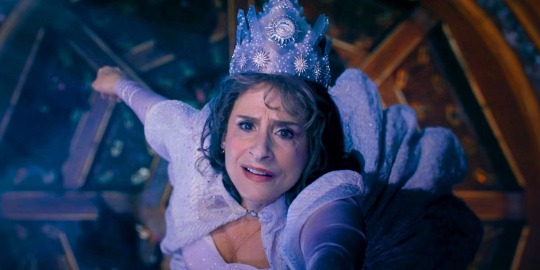
Death’s Hand in Mine
Lilia Calderu’s Epic Leap into Her Destiny
In Agatha All Along Episode 7, “Death’s Hand in Mine,” that haunting line from Ballad of the Witches’ Road hits hard, especially for Lilia Calderu. This isn’t just another dramatic beat—it’s the heart of her story. Lilia knows exactly what’s coming, and instead of running from it, she steps right up and grabs it by the hand. She’s not just staring down death; she’s embracing it, ready to take her destiny head-on.
What’s truly wild is that her sacrifice isn’t just about going out in a blaze of glory; it’s a calculated move. Lilia realizes this is the only way to save her coven, and she’s all in. Her death isn’t born from fear but from a fierce determination to protect those she loves. As she plunges into the unknown, she flips what could’ve been a tragic ending into an epic act of heroism.
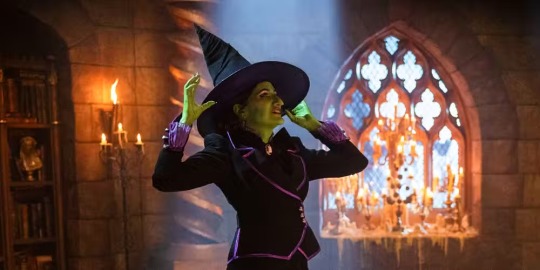
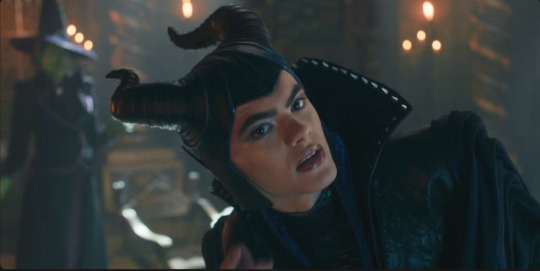
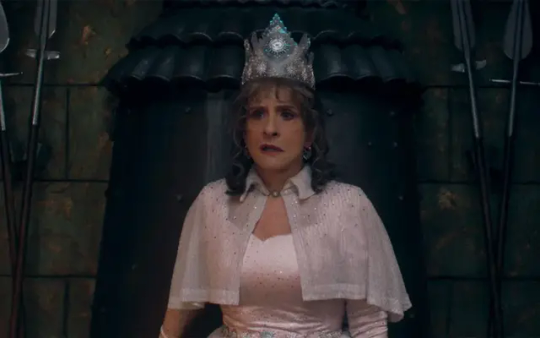
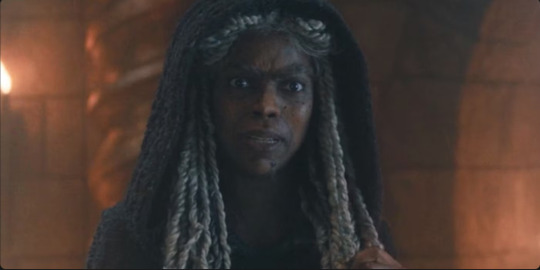
Witchcraft and Wardrobes
Channeling the Magic of Iconic Witches—Wicked, Glamorous, and Sinister
In Agatha All Along Episode 7, we dive headfirst into a magical realm where our favorite characters channel iconic witches from fantasy lore. This isn’t just a costume party; it’s a masterclass in storytelling that enriches our understanding of who they are and what they represent. Each outfit and persona acts like a mirror, reflecting deep themes of power, identity, and legacy in the world of witchcraft.
Agatha Harkness as the Wicked Witch of the West: When Agatha transforms into the Wicked Witch, she’s not just throwing on some green makeup and a black dress. No, this is a bold statement. The Wicked Witch is the epitome of cunning and darkness, and Agatha steps right into those shoes (or should we say, flying broomsticks). This parallel isn’t merely superficial; it invites us to question the nature of villainy. In The Wizard of Oz, the Wicked Witch is all about control, much like Agatha, who deftly manipulates events to carve out her narrative. By embodying this classic character, Agatha challenges our assumptions about good and evil, pushing us to explore the grey areas in between.
Billy Maximoff as Maleficent: Then we have Billy, rocking a look straight out of Maleficent’s wardrobe. This isn’t just a nod to the Disney villain; it highlights the complexity of Billy’s character. Maleficent is often portrayed as a symbol of empowerment, reclaiming her narrative after being wronged—sound familiar? Billy’s journey of self-discovery and grappling with his powers parallels this. By dressing as Maleficent, Billy taps into the darker aspects of his own identity, showing us that with great power comes not just the potential for heroism, but also the risk of losing oneself in the shadows of legacy.
Lilia Calderu as Glinda the Good Witch of the South: Lilia, on the other hand, embodies Glinda, the Good Witch. Draped in an ethereal gown, she radiates hope and support within the witch community. Glinda is a guiding light, offering wisdom and nurturing strength, and Lilia steps into this role with grace. This costume choice isn’t just about aesthetics; it reinforces the importance of sisterhood and collaboration among witches. In a world where Agatha often manipulates, Lilia’s character reminds us that power can also uplift and unite. She’s the bright spot amid the chaos, hinting at her potential to mediate the conflicts brewing around her.
Jennifer Kale as Snow White’s Hag: Last but not least, we have Jennifer, transforming into the menacing hag from Snow White. This choice is both haunting and poignant, capturing Jennifer’s tumultuous journey. The hag symbolizes the darker aspects of femininity, manipulation, and survival—elements that resonate deeply with Jennifer’s backstory as an 11th-generation root worker. By adopting this persona, Jennifer confronts her past traumas and societal perceptions of witches as malevolent. This metamorphosis is a declaration of resilience and reclamation, showcasing her evolution from victim to a powerful force in the magical realm.
Spellbinding Themes and Character Dynamics
This episode isn’t just about costumes; it’s a narrative device that lays bare the characters’ motivations and the overarching themes of the series.
Identity and Empowerment: The costumes serve as a canvas for each character’s struggle for self-definition in a world that loves to pigeonhole witches. Agatha’s embrace of her villainous side, Billy’s link to Maleficent, Lilia’s nurturing role, and Jennifer’s reclamation of her identity all spotlight the diverse spectrum of witchcraft. The show encourages us to reflect on how personal experiences and societal expectations shape who we become.
Sisterhood and Conflict: The dynamic between these witches highlights the delicate balance between unity and rivalry. Lilia’s supportive nature as Glinda is a stark contrast to Agatha’s more duplicitous tendencies, creating a rich ground for both conflict and collaboration. This tension echoes the broader theme of sisterhood, illustrating how witches can either lift each other up or become adversaries, depending on the choices they make.
Legacy and the Weight of History: Each character’s costume is a reminder of the rich histories they embody, prompting us to consider how their pasts shape their present identities. Whether it’s Agatha grappling with her villainous reputation, Billy dealing with familial expectations, Lilia confronting societal roles, or Jennifer struggling against limitations, the interplay of legacy and personal choice creates a narrative that resonates deeply with the complexities of modern witchcraft.
By weaving these references to iconic fantasy witches throughout history, Episode 7 of Agatha All Along not only pays tribute to beloved characters but also invites us to dig deeper into themes of power, identity, and the evolution of witchcraft in today’s storytelling landscape. It’s a beautiful reminder that the past informs the present, and in the world of witchcraft, nothing is ever as simple as black and white.
Another Trial, Another Countdown
The Hourglass Pushes Us One Step Closer to Destiny
The trial motif cranks up the tension in Episode 7 with the hourglass—your classic “time’s running out” symbol, and for Lilia, it’s hitting hard. She’s been battling against time her entire life, but the hourglass is the ultimate countdown to a fate she can’t dodge. It’s not just there for dramatic flair, though. This hourglass ties back to earlier episodes, where we had the kitchen timer in Episode 3, a metronome in Episode 4, and that retro ’80s digital watch in Episode 5. These weren’t just fun props—they were breadcrumbs leading to this moment. Time has always been Lilia’s greatest enemy, and as the sand slips away, so do her chances of rewriting her destiny. Her trial isn’t on the horizon anymore—it’s happening now.
Agatha Labels Lilia “Dory”
When Memory Lapses Meet a Perfect Pixar Zing
In Episode 7, Agatha’s sarcasm hits a new high when she calls Lilia “Dory” as she struggles to make sense of her disjointed memories. This clever jab is a clear reference to the forgetful fish from Finding Nemo and Finding Dory, voiced by Ellen DeGeneres. Just like the animated character who can’t keep a thought in her head for more than a few seconds, Lilia’s chaotic memory issues get a playful dig from Agatha, proving once again that no pop culture reference is off-limits when it comes to her sharp-tongued humor.
Billy’s Reunion Prophecy
Tommy Isn’t the Only Possibility
In Billy’s reading, Lilia drops the bombshell of an upcoming reunion. Naturally, Billy’s mind jumps straight to his twin brother Tommy—after all, that’s the whole reason he’s on this journey. But here’s the kicker: it might not be Tommy. This reunion could take a wild turn and involve someone unexpected, like the Scarlet Witch or even Vision. Whoever it is, you can bet it’s going to shake things up in a big way.
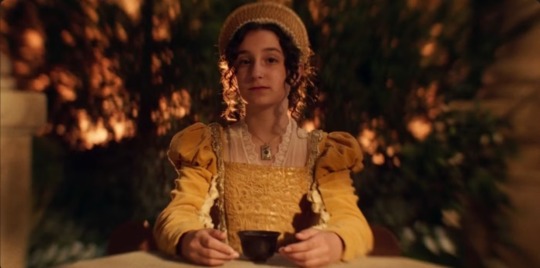
Lilia’s Flashbacks Pay Off Big
It All Comes Together in Episode 7
In Agatha All Along Episode 7, we finally get confirmation that all of Lilia’s seemingly random outbursts throughout the season are tied to her out-of-sync existence in time. Every cryptic line she’s dropped has been a breadcrumb leading us to this moment. Here’s a breakdown of each phrase in the order it was first said
“Wispy or Kooky?” – Episode 4
“Alice Don’t” – Episode 4
“Try to Save Agatha” – Episode 3
“I Hated This the First Time” – Episode 5
“Get Off Me” – Episode 2
“You Know We Really Hated Each Other in the Beginning, But Now…” – Episode 3
“I Love You Guys” – Episode 3
When you piece them together, it’s pretty touching to realize that some of Lilia’s final words were expressions of her newfound love for the coven. The bonds she formed as they walked down the Witches’ Road make her sacrifice even more impactful. Her out-of-sequence life wasn’t just a quirky character trait—it became the key to saving her coven when the Salem Seven came knocking. Lilia’s journey may have been chaotic, but in the end, it was all part of her story of loyalty and selflessness.

Lilia’s Tarot Drop in Episode 7
The Cards Are More Than Magic—They’re the Coven
Throughout Agatha All Along, Lilia Calderu’s cryptic outbursts weren’t just random—they were actually names of Tarot cards that come into play during her trial in Episode 7. Here’s how each Tarot card, previously mentioned by Lilia, ties into key characters and moments:
Queen of Cups – This one is all Lilia. She’s the intuitive force, trusting her inner voice even when time itself is working against her.
Three of Pentacles – Represents the entire coven. It’s about collaboration and sisterhood, something Lilia had been missing but ultimately finds in her fellow witches.
Knight of Wands – Linked to Alice and her recent death, symbolizing the path already taken and what’s been lost.
High Priestess – All eyes on Jennifer here. She’s the future, holding immense spiritual power, even if she’s not ready—or willing—to use it yet.
Three of Swords – Agatha holding Billy, representing the obstacles ahead: heartbreak, sorrow, and grief. It’s the emotional weight hanging over them all.
Tower (Reversed) – A symbol of destruction and upheaval, but reversed, it hints at miraculous transformation amidst the chaos.
Death – Of course, Lady Death herself, marking the inevitable end. “Death Comes for Us All” rings loud and clear here.
The way Agatha All Along uses these Tarot cards to weave together Lilia’s journey is brilliant. Episode 7 really nails the narrative payoff, showing how each card connects not just to Lilia, but to the entire arc of the show. It’s a well-executed nod to both Lilia’s fate and the future that awaits the coven.

Rio’s Big Mic Drop
Lady Death? Yeah, She’s the OG Green Witch
Well, there it is! Rio just claimed the title of Lady Death, proving she’s been the original Green Witch all along. Things are about to get real wild!
Episode 7 of Agatha All Along drops a bombshell in its final moments—Lilia finds out that Rio Vidal is none other than the living embodiment of Death herself. Yup, you heard that right. Turns out, Rio’s the original Green Witch, and all those subtle clues sprinkled throughout the season finally come full circle. Oh, and Agatha? She knew the whole time, of course. With this massive reveal now out in the open, the last two episodes are set to explore just how insanely powerful Rio really is, and let’s be real—the stakes just got cranked up to eleven.
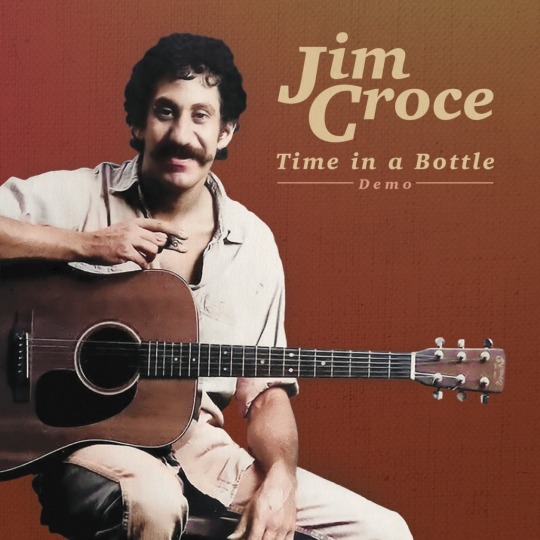
“Time in a Bottle” Packs a Punch
Lilia’s Emotional Rollercoaster and a Nod to Quicksilver’s Epic Scene
In Agatha All Along Episode 7, we get hit with Jim Croce’s “Time in a Bottle” during the end credits, and let me tell you, it’s not just background noise—it’s a deep cut into Lilia’s entire journey. This track does more than just set the tone; it taps into her power, her sacrifice, and the emotional weight of her story. When Lilia says, “Time is an illusion,” it’s not just a throwaway line—it’s the crux of her whole deal, living her life in a way that doesn’t follow a straight path.
The lyrics, “If I could save time in a bottle… just to spend them with you,” basically summarize Lilia’s abilities. She’s lived with time bottled up inside her, experiencing moments out of order. But, like the song, she couldn’t actually control it—she could only observe, never change. It’s that heartbreaking realization that, while she has the power to see everything, the moments still slip through her fingers. Much like Croce’s wish to preserve time for someone he loves, Lilia experiences her own life’s key moments—both the good and the gut-wrenching—but they always feel more like fate than choice.
Croce’s next line, “But there never seems to be enough time to do the things you want to do, once you find them,” hits hard for Lilia. Even with her foresight, even knowing what’s coming, she couldn’t avoid the tragedies she saw. It was all laid out in front of her, but she was locked into it, just like her destiny. And in her final moments, she sacrifices herself, not because she had a choice, but because she had already seen it play out. That’s the kicker—it wasn’t desire driving her actions, it was inevitability.
“If I had a box just for wishes and dreams that had never come true…” Okay, this line? It sums up Lilia’s entire existence. She wasn’t making decisions based on dreams or hopes—she was following a script she’d already lived. Everything she did—casting the sigil, warning Agatha—wasn’t a choice. It was something she’d already done, over and over again, like a broken record. And the acceptance of that is what makes her story so tragic yet powerful.
By the time her death arrives, Lilia’s already prepared. She knew it was coming, and her Maestra’s lesson—that divination is about bracing for the future, not changing it—was the backbone of her life. She fought against what she saw but couldn’t escape it. Her story, much like Croce’s song, is a bittersweet reminder that no matter how much we wish to freeze time or hold onto moments, it’s always slipping away.
Now, for the Marvel fans out there, let’s not forget the bigger picture here. “Time in a Bottle” was also the iconic soundtrack for Quicksilver’s unforgettable scene in X-Men: Days of Future Past, and with Evan Peters’ appearance in Agatha All Along, the connection feels like more than a casual nod. Just like Lilia’s fate, the song is all about love, loss, and the ticking clock we can’t outrun. It leaves us wondering—if Lilia could’ve truly controlled her time, how much would she have saved?
#marvel#marvel cinematic universe#mcu#agatha all along#agatha series#agatha harkness#billy maximoff#billy kaplan#lilia calderu#jennifer kale#mcuedit#marveledit#marvel characters#disney+#disney plus#easter eggs#agatha coven of chaos#agatha spoilers#marvel comics#marvel mcu#marvel television#mcu fandom#agatha darkhold diaries#agatha and teen#rio vidal#lady death#wicked witch#glenda the good witch#malificent#snow white
69 notes
·
View notes
Text
Once again loving the art direction on Prodigy- the planet with the sea of clouds?? Yes please!!!! Putting a sail on a starship and flying it through the clouds like a flying pirate ship?? Heck yeah!!!! It's all so cool and so beautiful.
It's like they've taken every childhood daydream of fantasy worlds you imagine when you make up stories as a kid, and put them all up on the screen. So much variety! Such a grand scale! And it's all just gorgeous. There's not a frame of this show that isn't jaw-droppingly stunning.
One thing I always wished for on Star Trek was for the art direction to be less grey and beige, less military uniformed aliens with bumps on their foreheads, less every planet being a carbon copy of Starfleet design, less cookie cutter sameness- because they've got the whole galaxy as a canvas. Just look at the variety of scenery and cultures on Earth alone- how much more must there be out there on thousands of alien worlds? While Star Trek always had excellent design and world building with the major Star Trek planets and cultures like Vulcans, Klingons, Bajorans, etc, I feel like they missed a lot of opportunities with the one off planets and cultures to be bolder and more experimental and stranger and more beautiful, even taking into account the constraints the old shows had as far as technology and budget.
But Prodigy absolutely takes that challenge and runs with it. The colors! The sweeping vistas! The weird creatures! The beautiful lighting! It's all my wildest dreams come true!!! And it's not just beautiful to look at, it helps tell the story- a culture's aesthetic tells you something about who these people are, what they value. It grounds you in a specific time and place. That's what good design work does- it enriches the storytelling. And nothing on Prodigy feels like a throwaway, everything feels deliberately thought out to fit the mood of each story, with meticulous attention to detail. Gone are the days of reusing the same set or costume on three different planets like live action Trek. (I know, a lot of that was due to lack of time and budget, but still, when it's supposed to be different planets, you want things to look different.)
I love Star Trek first and foremost for it's storytelling, but there's so many times I've wanted to redesign sets and costumes to bring it up to the level of awesomeness these stories deserved. Prodigy is the first time I've watched Star Trek and just thought 'hell yes!!!' to all the visuals, the whole time. Animation is such a great medium for Star Trek, and we're honestly so blessed to have this show. <3
#star trek: prodigy#prodigy spoilers#star trek prodigy#prodigy s2#star trek prodigy spoilers#star trek
130 notes
·
View notes
Note
So I want to write a novel, and I outline my story and write out everything that happens in the outline and I get to the end and it's... Between 20,000 and 40,000 words, usually. Like I can tell a complete story but I have a hard time getting it to the length of a publishable novel, and it keeps happening with different stories I write. Do you have any advice for making a story longer without making it feel like I'm just adding stuff to make it longer?
While I think you have a workable length for a first draft, I can see where your problems lay. Let's tackle what your intended goal is first.
Industry standard (set by traditional publishing) for novels is the following:
Adult novels - 80,000 to 100,000 word count. Many will fall between that range. Sci-Fi and Fantasy novels tend to run higher, but you'll notice Romance, Mystery, and Crime tend to run tighter, closer to 80k. Literary novels (Contemporary and Historical Fiction) can swing up and down that word length. Door-stopper books of 200k can be found, of course, but that's the opposite of what we're dealing with.
YA Novels - Contemporary tends to stick to a tight 80k, but publishing tends to seek longer fantasy novels, sticking to the adult standard of 10k.
Middle Grade (8-11ish year old readers) - 30,000 to 60,000. Most publishers want something in the middle, as MG readers are constantly stretching their reading capabilities.
These are generalizations that are subject to change, of course, but they're good guides to follow when editing. Let's say you want to aim for an adult novel, which means you want to at least double your 40k length. While looking over your work, consider the following:
Does your main character have enough problems?
If your story can be resolved within the 40k mark, you may need to add more complications to their journey. Does their external problem (the outside issues they're dealing with, like losing a job or battling a sentient typhoon) adequately line up with resolving their internal problem (dealing with unresolved guilt, confronting a fatal flaw about themselves, apologizing to that sentient typhoon for leaving them at the altar, etc).
Save The Cat also talks about the Shard of Glass or Unresolved Wound, a deeply internal problem the protagonist has to confront about themselves in order to solve the main problem of the novel. Deepening your character's issues can buff up the need for more words to resolve them. (Not every story has the character 'fix' this issue - many novels are about characters failing to do just that, that unresolved flaw finally dooming them in the end.)
Subplots, Sidequests, and McGuffins
Subplots are their to enrich your novel with elements that contribute to the overall journey. Besides the main problem your protagonist is facing, what else is going on in their life? Do they need to confess a crush to a friend? Is their struggle to control their magical powers tied to a traumatic childhood? Does learning the truth about their family history force them to reflect on their own behavior? A subplot should weave back into strengthening the main story while adding more elements to make it more interesting. It's not as hard as it sounds - the more you think about your character's internal problem, the more you realize they'll need to confess their feelings, confront their mother, or more to resolve that final issue.
By sidequests, I'm leaning into the fantasy element of storytelling, but you'll find this pops up in a lot of stories. A chance encounter in a mystery can provide an essential clue, or stopping to aid someone could lead to a character-revealing moment. Remember, this isn't filler - you're expanding the overall plot by leaning into your world-building to establish essential knowledge about your world, introducing minor characters that can act as aids or obstacles to a problem, or starting an action scene that changes the trajectory of the novel.
A MacGiffin is an object, device, or event necessary to the plot and the motivation of the characters, but typically unimportant or irrelevant in itself. Usually, the MacGuffin is revealed early on, and becomes less important once the storyline is set in motion. You'll see a lot of despairing comments about them, because they often can be used poorly. But MacGiffins are often essential parts of storytelling, a quest that leads your characters astray from what they should actually be doing (and in turn learning about themselves and the problem they need to face instead).
Your character spends half the novel trying to find the missing crown, only to discover it's been fake the whole time. That whole first half of the novel was a waste of time... or was it? By having your characters fixate on the wrong solution, you're exploring what Save the Cat calls "Doing Things The Wrong Way" where the real answer is in digging deep down, confronting that internal problem, and setting down the right path at last. This is where the mid-novel twist of the king being the villain all along, the dragon they're meant to slay for killing the villagers turns out to be a card-carrying vegan. The easy answer isn't the solution, and it's taking the hard path that gets things done.
For Example...
In Jedediah Berry's genre-bending mystery novel The Manual of Detection, the main character is pulled into finding the missing detective he used to write the case files for. As with any good mystery, there's a lot of good side quests - going to a bar only to run into villains that need confronting later, a one-sided rivalry with another detective ends up solving a problem later, etc. A subplot starting the novel where the protagonist goes out of his way to encounter someone at a coffee shop turns out to be an essential character connection later, and the MacGiffin - the Manual of Detection itself - turns out to be more important because of what it lacks.
In Jeff Smith's graphic novel series Bone, in the beginning, the main characters remain blissfully unaware of the true danger hunting them or the secrets of those around them. But the villains too are unknowingly pursuing a MacGuffin, leading to a series of events that will bring about a massive clash - and a confrontation of truths that will lead to the final solution.
And Finally, Maybe It's Not a Novel
I do want to say this might all not be what you need, because your true calling could be to write novellas - a length that varies between 20k to 40k. A shorter story is just as good as a lengthier one. There's a steady market for novellas of multiple genres, so it could be a good thing to look into if this feels like where your writing should be.
#plotting#book lengths#editing#writing advice#writblr#trying real hard to not spoiler Bone#but that plot point is real clear from the start
131 notes
·
View notes
Text
EA Blog Post on hair tech in DA:TV, under a cut due to length.
"Innovating Strand by Strand for Lifelike Hair in Dragon Age: The Veilguard Strand Hair technology adds visual fidelity and realism to characters, and it redefines what’s possible in Dragon Age: The Veilguard --- In the fantasy world of Thedas, where heroes rise and legends are forged, every detail breathes life into an epic saga. Dragon Age: The Veilguard introduces players to a crafted and beautiful world where even the finest elements like strands of hair tell a tale of their own. Each strand of hair weaves seamlessly into the fabric of the game, enriching your character’s journey through treacherous labyrinths and beyond. Together, the Frostbite and BioWare teams embarked on a quest to elevate Strand Hair technology, focusing on the following elements: - 50,000 individual strands per character for over 100 hairstyles – EA’s Strand Hair technology brings natural motion to your hero’s hairdo in Dragon Age: The Veilguard. - Adaptable to various character movements and environments – Frostbite and BioWare pushed the limits of hair rendering, achieving realistic material response and shadows. This collaboration introduced detailed, physics-driven hairstyles tailored to the unique world of Dragon Age. - Industry-leading realism – Dragon Age: The Veilguard sets a new standard for lifelike character hair at 60 FPS on PlayStation®5, Xbox Series X, and PC with compatible hardware, showcasing EA’s leadership in innovation and BioWare’s craftsmanship in enhancing immersive storytelling. This is how Frostbite and BioWare brought Strand Hair technology to the next level, letting you be the hero you want to be as Rook in Dragon Age: The Veilguard. Weaving Magic Into Reality Harnessing the power of the Frostbite engine, Strand Hair technology transforms your character's locks into a living tapestry of thousands of individual strands. Strand Hair technology combines physics with real-time rendering to simulate believable modeling of human hair."
"Incorporating realistic hair within games is quite challenging, which is why Frostbite has already spent years advancing hair rendering technology. Strand Hair was featured in previous EA SPORTS FC™, Madden NFL, and NHL titles, but the technology is always being upgraded for new releases. While Strand Hair is present in other EA games, the BioWare team had to push the limits even further for Dragon Age: The Veilguard. For example, implementing Strand Hair technology for characters who have waist-length hair with horns on their head presented some unique challenges. With hair attachments that move seamlessly, and the decoupling of simulation and render tessellation, this is the first EA game to offer such detailed physics-driven long hairstyles. The Frostbite team increased maximum hair length from 63 points to 255, and implemented a new system for complex hair structures like braids. Frostbite and BioWare also collaborated to achieve accurate hair material response and shadows across diverse lighting environments. Strand Hair technology in Dragon Age: The Veilguard features a new hair lighting model with improved light transmittance and visibility calculations. Dragon Age characters can have various builds and physical traits, each with unique hairstyles that adapt seamlessly to different garments and dynamic movements. Whether jumping at high speed in combat, slowing time, or going prone, the hair responds fluidly while maintaining realism across all scenarios. A Heroic Collaboration With Trials and Triumphs The evolution of Strand Hair technology has been a collaborative journey, beginning with Frostbite’s partnership with the EA SPORTS FC™ team that pushed the tech to a shippable state. Frostbite continues to refine and enhance this innovation, bringing its magic to titles like Battlefield 2042, UFC 5, College Football 25, and now, Dragon Age: The Veilguard. The Frostbite and BioWare teams worked closely together to get Strand Hair tech within Dragon Age: The Veilguard. The engineering team played a huge role in making sure hair looked good in new scenarios, like being surrounded by magical particles, underwater, or interacting with waterfalls. Their tireless work made these complex interactions both performant and robust. “The collaboration between Frostbite and the BioWare engineering team was key to supporting complex hairstyles. Advancing the technology for intricate styles and optimizing performance ensured that specific moments, like when hair covers a large percentage of the screen in certain cinematics, run smoothly.” – Maciej Kurowski, Studio Technical Director, BioWare Together, they tackled challenging lighting conditions and pushed the limits of strand length and tessellation, achieving hair designs far more complex than any previous EA title."
"Complex Hair Rendering and Enchanting Visual Magic A major difference between Dragon Age: The Veilguard and existing Frostbite titles that have shipped with Strand Hair is the sheer variety and quantity of visual effects and transparent objects. From magical spells to smoke, fire, and fog, the technology needed to blend seamlessly into the environment and magic of Thedas. Strand Hair is not rendered like traditional objects are within Frostbite. The technology utilizes a bespoke compute software rasterizer and is composited into the frame and blended with other opaque and transparent objects when resolved. Due to the complexity and uniqueness of the software rasterizer, the hair supported limited options for blending with the game world and characters. It was specifically designed to favor blending with depth of field, which is an important broadcast camera technique used in sports games. This did not blend well with transparent objects, which while few in sports titles, are extremely common in Dragon Age: The Veilguard. Thus, the BioWare team needed to develop a new technique for blending hair with transparent visual effects and environment effects like volumetric fog and other participating media. This technique involves splitting the hair into two distinct passes, first opaque, and then transparent. To split the hair up, we added an alpha cutoff to the render pass that composites the hair with the world and first renders the hair that is above the cutoff (>=1, opaque), and subsequently the hair that is lower than the cutoff (transparent). Before these split passes are rendered, we render the depth of the transparent part of the hair. Mostly this is just the ends of the hair strands. This texture will be used as a spatial barrier between transparent pixels that are “under” and “on top” of the strand hair."

"Transparent depth texture, note the edge of the hair."
"Once we have that texture, we first render the opaque part of strand hair, and then we render transparent objects. The shaders for the transparent objects use the transparent hair depth texture to determine whether the shading pixel is “under” or “on top” of the strand hair. If it’s below, it renders the hair and marks a stencil bit (think of it as a masking texture). If the pixel is “on top” or equal to the hair, it simply discards that pixel and renders nothing. After we’ve drawn the transparent objects once, we then draw the transparent hair since we are sure that there are no transparent objects ‘under’ the hair that have not been rendered yet. Finally we draw the transparent objects again, this time checking that stencil mask to see where we did not draw the transparent objects before, thus layering the pixels of transparent objects that are on top of the hair properly. This results in perfect pixel blending with transparent objects. – James Power, Senior Rendering Engineer, BioWare"

"Left, without “Layered” transparency. Right, with “Layered” transparency."
"Another challenge the BioWare team faced was handling the wide range of cinematic lighting rigs used for cutscenes, which must be rendered in real time in order to support customizable characters and followers. Because pre-rendering cutscenes was not possible, performance in cinematics was still paramount to the technical vision for the product. The team also wanted to maintain the same consistent frame rate across gameplay and cinematics to avoid jarring transitions if the cinematics were to be locked to 30 FPS. With that in mind when lighting scenes, there needed to be support for a wide range of lights that would be less computationally expensive to render, but would have extreme consequences on the quality of hair self-shadowing. This is a major contributor to the overall quality of the hair. Any given Strand Hair object, which has tens of thousands of individual thin hair strands, requires high quality shadow maps in order to have good coverage of the hair strands in the resulting shadowmap texture. Wide angle lights, distant lights, and non-shadowcasting lights do not provide adequate coverage (or no coverage at all, in the case of the non-shadowcasting lights). When the lighting routines are run, the hair would occupy a low amount of pixels in the shadowmap. When attempting to calculate light transmission inside the volume of hair, the fidelity would be poor, resulting in flat shading lacking detail near the edges of the hair where a fine gradient of light transmission is expected. To solve this, hero shadows are rendered for every Strand Hair object and every light that lighting artists designated as important to the shot. These hero shadows are generated at run time, using a tightly fitting light frustum that is adjusted to each hair’s bounding box, ensuring there are high fidelity shadowmaps. When applying shadows to the hair, we test to see if a shading point is in the hero shadow or the regular shadow (since the hair will not be in both) and composite the final results."

"Left, Bellara rendered without Hero Shadows. Right, with Hero Shadows. Note the differences in fidelity of transmission on the left side of the character head."
"Harnessing Efficiency With Performance and Memory Throughout development, Dragon Age: The Veilguard aimed for high performance and strict memory requirements across all platforms to ensure players have a smooth and scalable experience. Strand Hair is a memory and GPU dependent rendering system. Optimizations needed to be made in order to conform to the limited amount of system resources available for the following considerations: - Strand Hair assets, especially those with high strand counts and tessellation settings (which are necessary for the complex hair BioWare authored for both followers and Rook alike), have a high memory footprint. - The system is designed to allow for a large number of Strand Hair assets, but this comes at the cost of additional memory allocations to support the number of characters on field in other titles like EA SPORTS FC™. - For Dragon Age: The Veilguard, the team had a lot of control over which characters are on screen, and how many hair assets are supported. BioWare developed a system to control how large these allocations are to tightly fit the number of hair assets for the best possible memory utilization. On average, there is a flat GPU cost of around 128MB of GPU memory for the full field of followers (eight hair assets). Outside of this fixed memory cost, the system can dynamically adjust the size of system memory, GPU memory, and group shared memory in compute shaders using custom permutations with set thresholds. This provides the ability to scale additional memory costs from 300MB to 600MB depending on quality settings and resolution. Both Xbox Series X and PlayStation®5 sit at around 400MB depending on the number of characters and the assets loaded, as they each have their own memory costs. These costs are dynamically adjusted due to hair needing less memory to occupy less pixels. Lower resolutions (or lower dynamic hair resolution on lower quality settings) can get away with smaller buffer allocations for many of these per-frame costs without sacrificing any image quality. This work was especially important for PC due to the wide array of available graphics memory on GPUs available to consumers. This amount of memory being allocated per frame can push the GPU into demoting or paging memory, which can result in significant performance loss and hitches. For lower quality settings on PC, as well as Xbox Series S, swapping out Strand Hair assets for Card Hair assets is supported. These assets have significantly lower memory footprints and allowed the team to push for higher fidelity on systems that can handle the load without sacrificing performance on lower end systems. To achieve the performance requirements of Dragon Age: The Veilguard, BioWare implemented a number of scalable performance features that are applied across various quality settings on PC and performance modes on consoles. Strand Hair is normally rendered at render resolution and is unaffected by upsampling technology such as NVIDIA DLSS, AMD FSR, or Intel XeSS. Therefore it does not scale as well with other render features when those settings are applied. To ensure great performance across all configurations, BioWare implemented technology that scales the hair render resolution for a set of minimum and maximum targets based on said render resolution. Hair rasterization performance scales fairly aggressively with resolution and screen coverage. As hair covers more of the screen, a larger primitive count is required to render the strands at adequate detail. This requires both more memory and GPU resources."
To ensure we meet our frame time requirements, we set a maximum frametime budget for strand hair rendering for consoles at 6.5ms for 30 FPS (33.3ms frame time) and 3ms for 60 FPS (16.6ms frame time) with eight strand hair assets on screen. Our hair resolution control will adjust the resolution within a minimum and maximum resolution based on our upsampler and DRS settings and keep the hair costs proportional to those targets. This is important since hair does not go through upsampling, as mentioned earlier, and will not have its load reduced by those technologies. Running hair simulation costs are also done on the GPU in compute, and change dramatically depending on the asset, but tend to hover around 2ms with some spikes to nearly 5ms depending on complexity of the hair and whether we are loading/teleporting new assets. This cost does not scale with resolution. We have a variety of systems for cinematics and gameplay that will disable simulation for hair assets off screen or far away and do not contribute to shadows that are on screen. Controlling simulation costs is largely done by cinematic designers ensuring their scenes do not go over budget. – James Power, Senior Rendering Engineer, BioWare As mentioned earlier, BioWare’s Hero Shadows provide the hair with high fidelity shadow maps, but come at a heavy cost to GPU performance. Support for scalable hair decimation was added to combat this, allowing for the reduction of strand count when rendering shadows, thus reducing the cost of hero shadows. This enables lighters to use more of them, and support them for both 30 FPS and 60 FPS targets."
"Head and Shoulders Above the Rest Examples above describe only some of the improvements the BioWare and Frostbite teams worked on to redefine state of the art, real-time hair simulation and rendering technology for Dragon Age: The Veilguard. This groundbreaking accomplishment underscores EA's innovative spirit and highlights BioWare's exceptional craftsmanship. Whether you're uniting the Veilguard or facing the gods, the lifelike detail of your character's hair allows you to make this heroic story truly your own. As you journey through Thedas uniting companions and forging your legacy, remember that every detail down to the last strand of hair has been crafted to enhance your adventure. Join the ranks of innovators shaping the future of gaming realms. At EA, we forge alliances and craft powerful tools like Strand Hair. Explore open roles and embark on your adventure!"
[source]
#dragon age: the veilguard#dragon age: dreadwolf#dragon age 4#the dread wolf rises#da4#dragon age#bioware#video games#long post#longpost
41 notes
·
View notes
Text
Things To Consider When Writing With Mythologies

Mythologies, often ancient narratives passed down through generations, hold profound cultural significance. They are not just tales of gods and heroes but windows into the beliefs, values, and fears of societies long gone. This is why it’s important to ensure you are culturally accurate and don’t accidentally offend members of the communities you are writing about.
I personally am writing a WIP based around Japanese mythology, so here are some things I think you should consider when writing with mythologies.
Using Myths to Drive Plot and Character Development
Myths can serve as the very essence of your story's conflicts and themes. Imagine a tale where a young protagonist discovers they are the reincarnation of an ancient hero, destined to fulfill an ancient prophecy. The hero's journey in such a narrative would be profoundly tied to the mythological elements, guiding their growth and purpose.
Characters, too, can be shaped by the myths of their world. For instance, in Rick Riordan's "Percy Jackson and the Olympians" series, the characters are demigods, offspring of gods and mortals, and their quests are directly connected to the Greek mythos, intertwining their destinies with the larger tapestry of ancient legends.
Understanding Mythologies and Their Significance
Mythologies have been an integral part of human storytelling since time immemorial. They are not mere tales of gods and heroes but serve as essential cultural artifacts that mirror the beliefs, fears, and aspirations of ancient civilizations. Understanding the significance of mythologies can help us appreciate their profound impact on both the past and present, enriching our fantasy writing with layers of depth and meaning.
Mirrors of Cultural Beliefs
Mythologies offer a glimpse into the foundational beliefs and values of various cultures. These stories often revolve around the origins of the world, the creation of humanity, and the forces that govern existence. For instance, Greek mythology's creation story of Chaos giving rise to Gaia (Earth), Tartarus (Underworld), and Eros (Love) reflects the Greeks' attempt to explain the beginning of all things.
Archetypes and Universality
Myths are replete with archetypal characters and motifs that resonate with the human psyche. The hero's journey, the wise mentor, the epic battle between good and evil—these recurring themes transcend time and culture, connecting us to our shared human experience. As writers, tapping into these archetypes can make our characters and narratives more relatable and emotionally compelling.
Incorporating the essence of mythologies into our fantasy narratives allows us to harness the timeless power of these ancient tales. By honoring the significance of myths, we can create stories that resonate with readers on a profound and universal level.
Using Myths to Drive Plot and Character Development
Myths serve as powerful catalysts for driving the plot and shaping the characters in your fantasy world. By integrating mythological elements into your narrative, you infuse your story with a sense of wonder and connect your characters to something greater than themselves. Let's explore how myths can be harnessed to propel both plot and character development in your fantasy writing.
Mythological Themes as Central Conflicts
Incorporate mythological themes as the central conflicts driving your plot. Whether it's an ancient prophecy, a long-forgotten curse, or a divine mandate, mythological elements can set the stage for epic quests and high-stakes adventures. For example, in J.K. Rowling's "Harry Potter" series, the prophecies surrounding the Boy Who Lived and the rise of Voldemort become pivotal drivers of the plot.
Character Identity and Mythical Lineage
Give your characters a connection to the myths of your world. A character could be the descendant of a heroic figure from ancient times, bearing the weight of fulfilling an age-old prophecy. This connection to the past can shape their identity, motivations, and personal journeys.
Quests Rooted in Mythology
Craft quests and challenges that are steeped in mythological lore. By sending your characters on quests to recover sacred artifacts, defeat mythical beasts, or seek guidance from divine beings, you not only enrich your plot but also create opportunities for character growth and self-discovery.
The Mythic Impact on World Events
Consider how mythological elements influence the world events in your fantasy setting. Wars, political intrigue, and cultural practices may be shaped by the belief in ancient prophecies or the legacy of mythical beings.
Character Arcs Entwined with Myths
Let your characters' arcs intertwine with the myths of your world. As they confront their fears, overcome challenges, and evolve, they may embody the archetypal hero's transformation—rising to greatness or succumbing to tragic flaws.
Symbolism and Allegory in Mythological Writing
Incorporating symbolism and allegory into your mythological writing adds a layer of depth and complexity to your storytelling. These literary techniques allow you to explore profound themes and hidden meanings, making your fantasy narrative more thought-provoking and resonant with readers. Let's delve into how to effectively use symbolism and allegory in the context of myths.
The Power of Symbolism
Symbols are objects, characters, or events that carry deeper meanings beyond their literal interpretation. In mythological writing, symbols can represent abstract concepts, emotions, or significant aspects of the human condition. For instance, a mythical sword might symbolize justice and valor, while a sacred tree could represent the interconnectedness of life.
Allegorical Tales
Allegories are narratives that use symbolic characters and events to convey moral, philosophical, or political messages. Consider crafting allegorical myths to explore real-world issues in a fantastical context. For example, George Orwell's "Animal Farm" uses allegory to critique political systems and human nature.
Symbolism in Creatures and Settings
Leverage mythical creatures and settings as symbolic representations of broader concepts. A mythical dragon guarding a treasure might symbolize the greed that corrupts societies, while a mystical forest could represent the unknown and the call to adventure.
Interpretation and Depth
Allow room for interpretation in your myths. A richly layered narrative invites readers to contemplate various meanings and draw their own conclusions, fostering engagement and making your story more memorable.
Balancing Allegory and Narrative
Remember to strike a balance between allegory and storytelling. While powerful symbolism can add depth, be mindful not to overshadow the narrative's flow and character development.
Through symbolism and allegory, your mythological writing becomes a vessel for exploring timeless truths, moral dilemmas, and the complexities of the human experience. This layer of meaning elevates your storytelling, leaving a lasting impression on readers.
Blending Myths with Worldbuilding
The seamless integration of myths into your worldbuilding can elevate your fantasy realm from a mere backdrop to a living, breathing entity. By infusing every aspect of your world with mythological elements, you create a rich and immersive setting that captivates readers and allows them to fully immerse themselves in the wonder of your creation. Let's explore how to blend myths with worldbuilding to craft a cohesive and enchanting fantasy world.
Mythical Origins and History
Incorporate myths into the history of your world. Legends of ancient gods or legendary heroes can serve as the foundation of your world's creation and early development. These myths not only add depth but also explain the origins of key elements in your world, such as magical artifacts or mystical locations.
Mythical Geography and Landmarks
Infuse your world with mythical geography. Sacred mountains, enchanted forests, and mysterious islands can be inspired by myths or even be the settings of ancient mythological events. The presence of these mythical landmarks makes your world feel magical and mystical.
Divine Architecture and Symbols
Represent the influence of myths on architecture and symbols within your fantasy world. Temples dedicated to mythical deities, sacred runes, or sigils used for protection can add authenticity to your setting, giving readers a sense of a world with deep-rooted beliefs.
Rituals and Traditions
Showcase rituals and traditions that have evolved from ancient myths. Festivals celebrating mythical figures or events can be an essential part of your world's cultural identity. These traditions can create vibrant backdrops for scenes and contribute to the sense of community in your world.
Legendary Artifacts and Items
Integrate legendary artifacts and items from myths into your world. These powerful objects can become central to the plot or wielded by characters of great significance. For example, the Sword of Excalibur from Arthurian legends or Thor's hammer, Mjölnir, from Norse myths are iconic mythical artifacts.
Creatures and Races
Inspire the creation of unique creatures and races based on myths. Drawing from various mythologies, you can invent fantastical beings like phoenixes, centaurs, or sirens. Alternatively, reimagine existing mythical creatures in new and intriguing ways.
Myths and Cultural Diversity
Explore how myths shape the cultural identity of different regions or races in your world. Diverse myths can contribute to varied customs, values, and worldviews. This cultural tapestry enriches your world and provides opportunities for compelling conflicts and interactions between characters.
Avoiding Cultural Appropriation and Stereotypes
As writers, we have the incredible opportunity to draw inspiration from a wide array of cultures and myths to enrich our fantasy worlds. However, with this privilege comes the responsibility to approach the task with cultural sensitivity and respect. Avoiding cultural appropriation and stereotypes is crucial in creating a story that celebrates diversity and promotes understanding. Let's delve into ways to navigate this delicate terrain while crafting a mythologically inspired narrative.
Research Extensively
Thorough research is paramount when incorporating elements from real-world cultures into your writing. Dive deep into the myths, traditions, history, and values of the culture you intend to draw from. Seek out diverse sources and perspectives to gain a comprehensive understanding.
Understand Cultural Context
Cultural context matters. Recognize that myths are deeply rooted in cultural experiences and may carry sacred or sensitive meanings. Ensure that you grasp the nuances and significance of the myths you're using, and handle them with the utmost respect.
Avoid Stereotypes and Exoticization
Steer clear of perpetuating stereotypes or exoticizing cultures. Respectfully depict characters and settings without reducing them to one-dimensional or caricatured portrayals. Create fully fleshed-out characters with their own motivations, strengths, flaws, and complexities.
Collaborate and Seek Feedback
Consider collaborating with sensitivity readers or cultural consultants who are well-versed in the culture you're representing. Their insights can provide invaluable guidance and help you navigate potential pitfalls.
I hope this blog on Things To Consider When Writing With Mythologies will help you in your writing journey. Be sure to comment any tips of your own to help your fellow authors prosper, and follow my blog for new blog updates every Monday and Thursday.
Looking For More Writing Tips And Tricks?
Are you an author looking for writing tips and tricks to better your manuscript? Or do you want to learn about how to get a literary agent, get published and properly market your book? Consider checking out the rest of Haya’s book blog where I post writing and publishing tips for authors every Monday and Thursday! And don’t forget to head over to my TikTok and Instagram profiles @hayatheauthor to learn more about my WIP and writing journey!
#haya's book blog#haya blogs#hayatheauthor#writing community#writing tools#creative writing#writing tag#writing tips and tricks#writing tips#writing tip#writing advice#writing resources#writers of tumblr#writing inspo#writing help#writer community#writer things#writer tips#writer on tumblr#writer problems#writerscommunity#writer tag#writer tricks#writer tools#writer advice#author advice#author resources#author tips#author tumblr
228 notes
·
View notes
Note
I have a mostly blind main character/narrator in my ancient-Greece inspired fantasy setting. She is an epic poet. Though she experienced most of the story she tells, the story isn't about her and there are scenes that she didn't see herself. I want to show these scenes in the tradition of epic, in which the poet is omniscient.
Should the scenes my narrator didn't experience herself be described as if she had experienced them--blindness and all--or should she describe them as they've been told to her from the perspectives of others? Does doing the latter erase her blindness? Do you have a different idea? Am I overthinking this entirely?
I love your blog and appreciate any advice or critiques you have. Thanks!
I don’t think this would count as erasing blindness. It reminds me of a blind person writing or narrating a story or play, which would be similar to a sighted person doing the same. Omniscient point of view is fine for blind people, just as sharing a story told by another would be.
You can show your main character’s blindness in other ways, if she has any scenes herself inside or outside of the story she tells. Does she have a cane? How does her blindness influence or enrich her life outside of her poetry and storytelling?
You may also consider including her vision more in the epic. For example, if your character has central vision loss, the epic may not include descriptions of faces, while instead focusing on voice, tone, degree of warmth, color, or texture. Even if the story is told in omniscient point of view, the narrator’s influence could still be felt.
Lastly, while ‘mostly blind’ is a bit of a misconception of blindness, it sounds like your character has some vision, as most blind people do. Even totally blind people can describe events and people visually. With this in mind, she could use her residual vision without issue.
I think having a sensitivity reader would be helpful. Such as through me, @sensitivityreaders
If you feel worried about your main character’s blindness, perhaps portraying blindness in other characters would help. Given the setting, characters might be more susceptible to common causes of blindness due to having less access to healthcare, particularly modern treatment. Common causes of visual impairment and blindness, according to this page by the World Health Organization, include cataracts, glaucoma, uncorrected refractive errors, age-related macular degeneration, or diabetic retinopathy. Lack of access to healthcare could lead to higher rates of vision loss due. You may be able to use some of those, if that helps.
36 notes
·
View notes
Text
youtube
George R R Martin is an American novelist and short story writer, screenwriter, and television producer. He is the author of the series of epic fantasy novels A Song of Ice and Fire, which was adapted into the Emmy Award-winning HBO series Game of Thrones (2011–2019).
01 - The human heart in conflict with itself is the only thing worth writing about. You need characters to question who, and what, they are and how they fit within the world around them. This is key for character development.
02 - Write for yourself. Following trends, or pleasing your audience in spite of your own plans, harms good storytelling. Listening to critique is good, but inevitably you must be entertained and feel your way through the writing process.
03 - Anyone can die, and death is a key part of any story with conflict. Don't give your characters any special treatment, have them play by the same rules you set upon your world. Not only does it add constant tension, but it also creates a realistic atmosphere.
04 - Sometimes an idea can just come to you. If so, do not disregard it, instead follow the idea as a writer and write it! It could either lead into an interesting project or serve as useful practice.
05 - Show don’t tell. Immersion is essential to any story. Only through visuals and vivid descriptions of your world, can your audience even start to imagine themselves in your world.
06 - Allow yourself to discover in the process of writing. While you need to know the major outcomes of the story, and character arcs, allow yourself to enjoy and be aware of your sixth sense on your way through the story.
07 - When writing a script, dialogue should never be too long. Other than a few monologues, or moments, keep it short and sweet. Also, read the dialogue aloud by yourself or with the cast, this is a simple effective way to see if it works.
08 - When adapting a novel, you’ll always lose some content. However, a good adaptation rides the fine line between cutting side content and keeping smaller meaningful moments that enrich the story.
09 - Being a writer is not a career for those who wish to be stable. It is a massive risk in every way. A true writer, even during the lows of their career, will never stop storytelling. It is essential to whom they are. So, from a beginner to a bestseller, never stop writing.
10 - The ending to an act is fundamental to keeping the audience engaged with your story. Leaving it on a cliff-hanger, or teasing the audience with a different outcome can be the best way to break up converging storylines and finished acts.
93 notes
·
View notes
Text
Trope chats: the core trio

The "core trio" is one of the most recognizable and enduring character group dynamics in fiction, frequently seen across genres ranging from fantasy and science fiction to coming-of-age stories and adventure novels. This trope revolves around three characters who form a central team, often embodying complementary skills, personalities, and perspectives. The core trio offers a flexible structure for storytelling, allowing for a balance of conflict, cooperation, and character development. It also serves as a microcosm of social dynamics, symbolizing friendship, diversity of thought, and the idea that different strengths are necessary to achieve common goals. However, the trope also comes with narrative risks, such as predictability, over-reliance on established archetypes, and the potential for underdeveloping one or more characters.
This essay will explore the core trio trope as a literary device, examine its common pitfalls, delve into its societal influence, and outline the typical archetypes that tend to form this dynamic.
The primary strength of the core trio lies in its ability to create balance within a narrative. By distributing different traits and abilities among the three characters, the trio often becomes stronger as a unit than as individuals. For example, in J.K. Rowling's Harry Potter series, the trio of Harry, Hermione, and Ron exemplifies this dynamic. Harry is brave but often impulsive, Hermione is the intellectual and planner, while Ron provides emotional support and loyalty. Their different strengths are essential to overcoming the challenges they face, and the trio dynamic allows for varied interactions and conflicts that drive the plot forward.
In terms of storytelling, this balance provides flexibility. Each character in the trio can take turns leading, depending on the situation. For example, Hermione's intelligence saves the group in academic or puzzle-based challenges, while Harry's bravery leads them through dangerous confrontations. Ron’s emotional insight often helps resolve interpersonal tensions or find the human element in complex situations. This variety prevents the narrative from becoming monotonous or overly reliant on a single protagonist, enriching both plot progression and character development.
Furthermore, the trio allows for a more layered exploration of themes, as the characters can embody different facets of a central idea or thematic question. In The Hunger Games, the core trio of Katniss, Peeta, and Gale explores themes of survival, sacrifice, and resistance, with each character offering a different perspective on how to navigate the dystopian world they inhabit. Katniss represents a pragmatic, survival-oriented outlook; Peeta brings empathy and a moral compass; Gale embodies a more revolutionary, aggressive approach. The tension and interaction between these perspectives create depth and complexity in the narrative's exploration of rebellion and justice.
Another major use of the core trio trope is that it serves as a microcosm for social groups or even society as a whole. The diversity within the trio often represents a broader spectrum of human experience, allowing authors to explore questions about unity, difference, and teamwork. Trilogies like J.R.R. Tolkien’s The Lord of the Rings and Rick Riordan’s Percy Jackson series use their core trios to symbolize the idea that collective strength arises from diversity—whether it's diversity of thought, background, or capability.
In many instances, the trio dynamic underscores the idea that no one individual can succeed alone, highlighting the importance of collaboration and interdependence. This is a particularly valuable theme in genres such as fantasy or science fiction, where the trio often faces larger-than-life challenges. In such stories, the unity of the trio becomes a metaphor for societal cooperation, with the group’s success symbolizing how different kinds of people, ideas, or skills are needed to face complex or insurmountable odds.
The core trio often draws from a set of common archetypes, which serve to maximize the contrast between the characters’ personalities and roles. While these archetypes vary depending on the genre, certain patterns recur in many of the most iconic trios. Below are some of the most frequent archetypes found within core trios.
The leader or hero archetype typically holds the spotlight and is central to the story's main conflict or journey. This character is often the most proactive, tasked with making the major decisions, and carries the weight of responsibility for the group. Examples include Harry Potter (Harry Potter), Frodo Baggins (The Lord of the Rings), and Katniss Everdeen (The Hunger Games).
The hero tends to be morally complex or flawed in some way, as this helps humanize their character. Harry struggles with feelings of inadequacy and destiny, Frodo is weighed down by the burden of the One Ring, and Katniss wrestles with her role as a symbol of rebellion. While they are the focal point of their respective narratives, they often rely on the support of their companions to navigate the emotional and physical challenges they face.
The intellectual or strategist is the problem solver of the trio, typically using logic, reason, and knowledge to overcome obstacles. This character’s main role is to think ahead, analyze situations, and provide the brains behind the trio’s operations. Hermione Granger (Harry Potter) and Annabeth Chase (Percy Jackson) are archetypal examples of this type. Both characters are known for their intelligence and resourcefulness, often formulating plans that keep their companions out of danger.
The intellectual can also be more emotionally detached or socially awkward, often contrasting with the more action-oriented or emotionally-driven members of the trio. This dynamic creates tension but also emphasizes the value of diverse approaches to problem-solving, reinforcing the theme of collaboration.
The third archetype typically fulfills the role of "the heart" or the emotional anchor of the group. This character offers loyalty, emotional support, and a grounding force to balance out the more extreme traits of the leader and the intellectual. Ron Weasley (Harry Potter), Samwise Gamgee (The Lord of the Rings), and Simon Lewis (The Mortal Instruments) all serve as emotional anchors in their respective trios.
This character also often provides comic relief, softening the tension in difficult situations. Though they may initially seem less crucial to the group’s success, their emotional resilience and loyalty often become central in moments of crisis, demonstrating that heart and emotional intelligence are just as important as bravery or intellect.
These archetypes—leader, intellectual, and heart—allow for a complementary distribution of skills and personality traits, creating narrative balance and giving each character distinct strengths. While these archetypes are common, effective trios typically subvert or deepen them over time, adding complexity to the relationships and individual arcs.
One of the major pitfalls of the core trio trope is predictability. Because this structure is so prevalent in fiction, audiences may come to expect certain roles and dynamics within a trio, which can lead to a lack of narrative tension or surprise. For example, if readers know that one member of the trio is the "leader" and another is the "heart," they may anticipate the ways in which these characters will interact or solve problems, diminishing the emotional impact of the story.
Additionally, trios can sometimes fall into the trap of stereotyping, especially when archetypes are rigidly adhered to without room for development or subversion. For instance, the "intellectual" character might be reduced to a walking encyclopedia, with little emotional depth, while the "heart" character is relegated to comic relief without meaningful contribution to the plot. This flattening of characters can make them feel more like plot devices than fully realized individuals.
A related issue is the potential for unequal character development within the trio. Oftentimes, one or two characters receive the majority of the narrative focus, while the third is left underdeveloped. This is particularly common when one character, typically the "leader," dominates the story. For example, in some interpretations of The Hunger Games, critics have pointed out that Gale is often sidelined in favor of Katniss and Peeta’s emotional arc, making him feel less integral to the core trio, despite his thematic importance.
If the trio becomes imbalanced in terms of development, it can weaken the group dynamic and lead to a lopsided narrative, where certain characters feel more like sidekicks than equals. The challenge for authors is to ensure that each member of the trio is given sufficient depth and agency, so that their contributions feel equally valuable.
Another potential pitfall is over-reliance on the group dynamic, which can limit individual character growth. When a trio is defined primarily by how the characters relate to each other, their personal arcs may suffer. The characters become so intertwined in their roles within the group that they fail to develop independently. This issue is common in long-running series, where the trio becomes a narrative crutch, leading to repetitive group interactions and limiting the possibility for solo character arcs.
For example, in some long-running television series, the core trio remains static in their relationship to one another, even as the plot moves forward. The lack of individual growth can make the trio feel stagnant and unchallenged, reducing the emotional stakes of the story.
The core trio trope often reflects broader societal structures, particularly around the themes of collaboration, diversity, and unity. The trio dynamic frequently symbolizes the idea that different perspectives and skills are necessary to achieve success, offering a counterpoint to narratives that glorify the lone hero. This reflects a societal shift toward valuing teamwork and interdependence over individualism, mirroring real-world trends in workplaces, education, and social groups, where collaborative efforts are increasingly prized.
The trio's emphasis on unity through diversity also has a social resonance, particularly in contemporary fiction that seeks to challenge monolithic or exclusionary representations of heroism. Diverse trios, whether through differences in gender, race, or background, embody the idea that strength comes from multiple viewpoints. In this way, the core trio trope can challenge societal norms around leadership, heroism, and cooperation, offering a model for how communities can work together despite differences.
The trio often functions as a symbolic representation of balance and harmony. In many narratives, the trio must learn to align their strengths and weaknesses to achieve their goals, symbolizing the broader idea that balance—between intellect, emotion, and action, or between differing worldviews—is key to success. This idea is particularly common in fantasy or adventure genres, where the trio’s journey often involves learning to reconcile their differences to overcome a larger, external threat.
In stories where the trio fails or fractures, this breakdown often symbolizes larger societal or moral failures. For example, in stories like The Dark Knight Rises, where the trio of Bruce Wayne, Alfred, and Commissioner Gordon temporarily splinters, this schism represents broader thematic concerns around trust, loyalty, and the challenges of maintaining integrity in a corrupt world.
The core trio trope is a versatile and powerful tool in fiction, providing a narrative structure that balances character dynamics, explores diverse perspectives, and offers a microcosm of societal cooperation. By distributing strengths and weaknesses among three distinct archetypes—such as the leader, intellectual, and heart—the trio can reflect themes of teamwork, diversity, and unity. However, this trope also comes with challenges, including predictability, unequal character development, and the potential for over-reliance on group dynamics.
In terms of societal influence, the core trio often mirrors collective ideals around collaboration and balance, emphasizing the value of different strengths working together toward a common goal. When used thoughtfully, the core trio trope not only enhances the storytelling experience but also offers symbolic commentary on the importance of diversity, unity, and mutual support in overcoming life’s challenges.
#writeblr#writers of tumblr#writing#bookish#booklr#creative writing#fantasy books#book blog#ya fantasy books#ya books#fiction writing#how to write#writers#am writing#fantasy writer#female writers#story writing#teen writer#tumblr writers#tumblr writing community#writblr#writer community#writer stuff#writer problems#writerblr#writers community#writers life#writers corner#writers on tumblr#writers on writing
9 notes
·
View notes
Text
13 books
What’s up readers?! How about a little show and tell? Answer these 13 questions, tag 13 lucky readers and if you’re feeling extra bookish add a shelfie! Let’s Go!
Tagged by @softest-punk. whoops. this is from April 😅
1) The Last book I read:
I've been rereading Narnia and I recently finished book 3, almost finished book 4 too. It's honestly delightful. I hadn't read them since I was 10. I've got portal fantasies spinning in my mind now though. Prince Caspian was giving me thoughts. There's a universe where there will be a Dreamling portal fantasy, if I get to it.
2) A book I recommend:
A recent read I really enjoyed was Journey by Moonlight by Antal Szerb. It kinda called me out on all my worst impulses though.
3) A book that I couldn’t put down:
Entire Stormlight Archive series. It fed my poor, starving, "needs excessive levels of enrichment" brain. I'm on the last one, I don't know what I'll do when I finish the series. Wait for the next one? Goddammit.
4) A book I’ve read twice (or more):
I don't reread books that often, other than Narnia I guess, but with that one it's been so long it's not really rereading anymore. I don't have a huge amount of time for reading so I'm more often reading new things.
5) A book on my TBR:
Recently I've been thinking that I want to read more Borges... I even had a dream about it last night 😂 wherein I was back in university taking a class on South American literature, except the class was in Spanish and I don't speak Spanish so really not sure what that was trying to tell me.
6) A book I’ve put down:
I dropped Wolf Hall halfway through although I'm hoping my brain will come back to it. I just got kind of mired in it and lost track of what was happening like 15 times 😂 maybe audiobook-while-doing-manual-labor wasn't the medium for this one... though the audiobook narration is great.
7) A book on my wish list:
I've been moving around at least every few years since college so I'm not really "collecting" books atm and don't have a wishlist of ones to own... The closest thing would be like niche media studies books from university that are barely in print that I want copies of XD considering how often I'm looking it up I should track down a copy of Jerome Christensen's book on studio authorship which was actually foundational to my conception of the systems and structures that mold storytelling, especially in the US.
8) A favorite book from childhood:
I was a Warrior Cats kid 😎
9) A book you would give to a friend:
Normally if I'm trying to pawn a book off on someone else it's because it's super cursed and I want them to experience it too 😂 an example: this published Obama & Biden fanfiction that I actually own

one of my weirder possessions to be sure
10) A book of poetry or lyrics that you own:
There are many, but the one I'll always keep is my signed copy of Night Sky With Exit Wounds, even though it took me like 7 years to read it, because I'm slow at reading sometimes.

11) A nonfiction book you own:
They are mostly all media studies--a great one is Listening In by Susan Douglas which is a history of radio in the US.
12) What are you currently reading:
I always have a ton of books laying around the house that I'm "currently reading." When I remember they're there. Primarily right now it's Rhythm of War (Stormlight Archive 4) and House of Leaves. And Narnia of course.
13) What are you planning on reading next?
I should probably finish The Tatami Galaxy which I started a while back and then forgot about 😂 it's just sitting there neglected. More generally want to read all the random books I already own so I don't have to lug them all with me the next time I move.
woof, this thing is actually so long no wonder it took me 4 months to fill out. tagging @magnusbae, @arialerendeair, @beatnikfreakiswriting if you even want to do this many questions 😂
15 notes
·
View notes
Text
Tifa's Theme: A Musical Deep Dive (Part I)
(A repost from my old side blog no longer in use. All future analyses will be on this one.)

Greetings and welcome to a deep-dive into Uematsu-senpai’s masterpiece of a character theme. We will examine the rich marriage between composition and storytelling – i.e. how its musical elements express Tifa’s personality, conflictions, relationships, and story motifs. If you’ve come with zero knowledge in music theory, then my hopes are that you will leave here somewhat enriched (no prior knowledge is required). If you are a fellow geek for music, then I hope this adds insight in a storytelling sense. Ultimately, the goal of this post is to more deeply understand Tifa Lockhart.

I have divided this analysis into five sections each built on the prior: (A) the key; (B) the intro; (C) the leitmotif; (D) the original game’s use of the leitmotif; and (E) the compilation’s use of the intro and leitmotif. (The leitmotif of course being Tifa’s recurring melody, of which the first subphrase is sampled above.) Because Tumblr allows only 5 videos per post, some sections are spread across two posts.
So have your headphones/audio ready, and let us commence.
Disclaimer: these are simply my own interpretations offered with supporting evidences. I can only, to my best limited efforts, speculate as to what Uematsu did or did not intend when composing the piece.
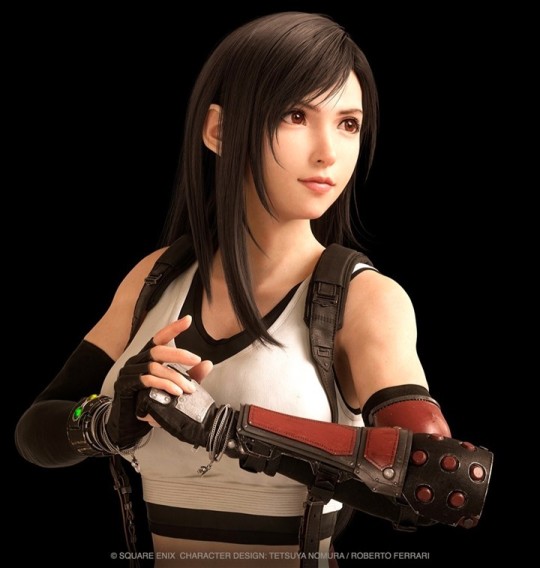
Section (A): The Key
Tifa’s Theme is composed in the key of F major, one of the happiest keys in music. It is argued by many, in fact, to be the happiest key (though this is subjective).
“F major is at once full of peace and joy…” – Ernst Pauer (19th C. composer).
This is a reason, I presume, that Uematsu-san chose F major for the track which represents home.
“Welcome home, Cloud,” is the first line that Tifa speaks to Cloud in the game. “I’m home” (from the Japanese dub, 唯今 – “Tadaima”) is the last thing Cloud says to Tifa at the end of Advent Children. Home is our first story motif embodied by Tifa’s character.
But of course Uematsu’s decision likely only began there.
“F major is at once full of peace and joy, but also expresses effectively a light, passing regret – a mournful, but not a deeply sorrowful feeling.” – Ernst Pauer (quote continued).
So we have peace and joy with an undertone of mournfulness; a juxtaposition between two opposing ends of the emotion spectrum. To appreciate how the key of F major achieves this, we can benefit from a quick comparison with two other tracks.
It might surprise you that Tifa’s Theme – our warm song of home – shares the very same key notes as the tensest and most sorrowful track in Final Fantasy VII. Listen to the Cries of the Planet is composed in F major’s relative minor key: D minor. It has the same key chords as F major, yet the chords serve different functions (something we will get to later). Put another way, it has all the same notes, yet they are arranged differently. Where F major is (argued) the happiest key in music, D minor is almost universally called the key of “true sorrow.”
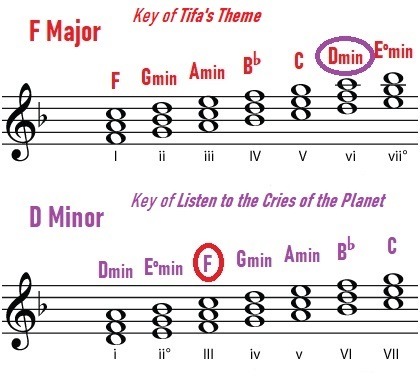
Let’s compare the two tracks here:
youtube
I wanted to begin with this little contrast for three reasons. First, to excite you non-music-theorists about the emotive power of music. Here, from our two related keys, come two completely contrasting moods. Second, we are concerned with what and how the notes will speak. Third, well… that’s a little more selfish. Listen to the Cries of the Planet is one of my favorite tracks in the game.
Our other track is One-Winged Angel – the main passage, for there are three keys in this track. It is curious that the foil villain to Tifa has his fighting theme in the relative minor of hers. Like a mirror – for as Sephiroth is Cloud’s despair, Tifa is Cloud’s home. Or, to borrow a Kingdom Hearts metaphor, we’ve Cloud’s darkness against Cloud’s light. D minor is also the key of Sephiroth’s main theme: Those Chosen by the Planet.
youtube
And now, onto our deep-dive into Tifa’s Theme, which features in the original game, Advent Children, and 2020’s Remake. For now we’ll be using the piano sheets from Advent Children.
Section (B): The Intro
youtube
Tifa’s Theme begins with a tonic chord (the ‘home’ chord of our key). The further we move away from our tonic, the greater the tension (instability) will be.
By ‘home’ here I am referring to the music’s tonal center – not ‘home’ the story motif which Tifa embodies. In light of that distinction, however, with the tonic being the home point of the track and home being a story motif central to Tifa’s character, we are simultaneously referring to both.
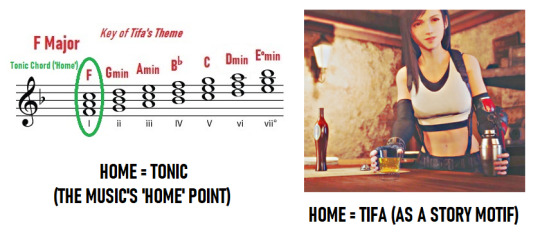
So we begin with our tonic (the F major chord) which draws us “at once [into] peace and joy.” Yet there is concurrently the hint of a mournful undertone. Only a tiny, tiny allusion – perfect for our introduction to Tifa. When we first meet her after all, we’ve no idea of the burdens locked in her heart.
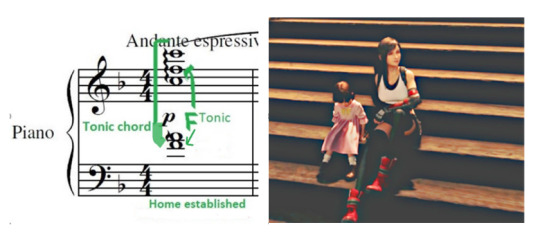
This opening tonic is presented in whole notes (the longest kind of note in common composition). In our piano version, these whole notes are arpeggiated (see the squiggly lines to their left), meaning that the chord is ‘spread’ or ‘rolled’ – the notes are played and held one after the other from the bottom up. We are at once drawn in by Tifa’s inviting warmth and we linger there.
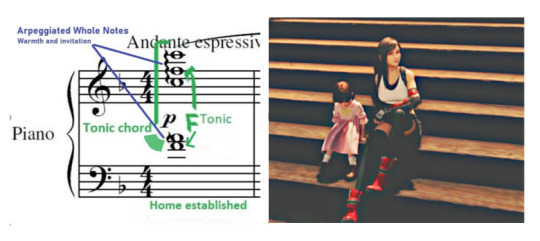
Our tonic is immediately succeeded by a chromatic chord (a chord composited of notes outside the key; notes that ‘don’t belong’). This second chord, in fact, is the sort we would expect to find in F minor. It does not ‘belong’ in our key of F major – thus the mournful undertone which would have been further hinted is brought into direct statement. Foreshadowed is the revelation of Tifa’s burdens. She is carrying deep and unsettling secrets.
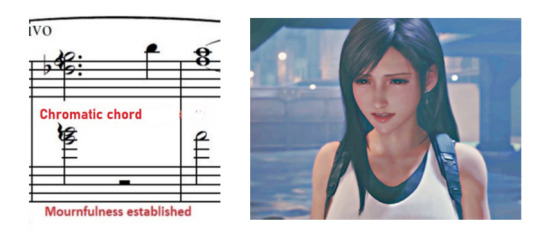
How does this work? Uematsu-san has effectively ‘borrowed’ the second chord of the F minor key and inserted it into the track’s opening chord progression. This subverts the natural expectation of our ears and creates instability – a trick he will frequently pull to toy with our emotions.
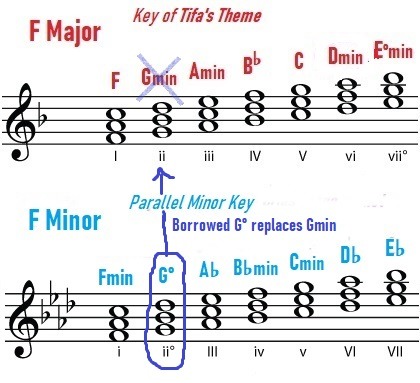
Uematsu-san then extended this borrowed chord to heighten the mournfulness by adding a 7th (a note seven intervals above the root note which further colors the mood). This enlarges the magnitude of Tifa’s mournfulness: we feel that her burdens are heavy.
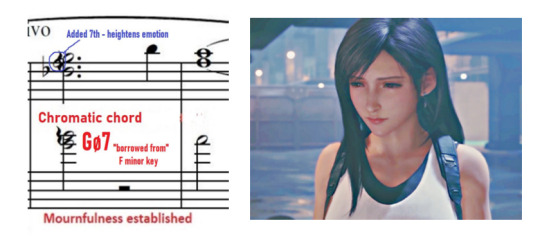
The next two bars instantly carry us back to the tonic (see the harmony on the bottom stave below). This occurs in a slow fall, a faster fall, then a faster, now extended lift: the intro’s re-establishment and emphasis on the motif of home. We are never to stray from feeling at home when we are around Tifa. Simultaneously, these bars speak the ‘locking away’ of Tifa’s burdens. Her sufferings are buried quickly as her love for others is brought to the forefront.
Where our chromatic chord had an added 7th to heighten the mournfulness, our tonic build is extended with a 7th and 9ths in its lift – heightening home in a stronger comparative sense. Tifa being a home to others, in other words, overpowers her own sufferings.

There are three things we can grasp from this sequence of slow-fall to faster-fall to faster-extended-lift.
First, Tifa holds a profound motherliness toward others which outweighs thought for her own wellbeing.
Second, Tifa is insecure in dealing with her emotions, and thus strives to keep herself distracted from them. We will see this displayed right from the time of her childhood:
At 8, unable to cope with her mother’s death, she treks up the perilous mountain to try and ‘find her’ on the other side;
At 15, unwilling to face the grief of her father’s murder, she recklessly rushes to confront Sephiroth;
At 17 (in Traces of Two Pasts), she confesses to Jessie that she has been “running” from learning the truth about Nibelheim;
At 20 (in Remake), she admits she’s not even allowed herself time to decorate her apartment;
At 22 (in On the Way to a Smile), she avoids being alone in keeping extra busy with the bar and the kids during Cloud’s absence.
Thirdly – and perhaps most jarringly – Tifa embodies home despite her life being plagued by suffering.
Tifa, who lost her home and had to rebuild her life from scratch, provides a home for Cloud, Marlene, Barret, Avalanche, and later, Denzel.
Tifa, who lost her mother as a child, mothers everyone else, is for all intent Marlene’s mother, and becomes the mother of a family unit with Cloud.
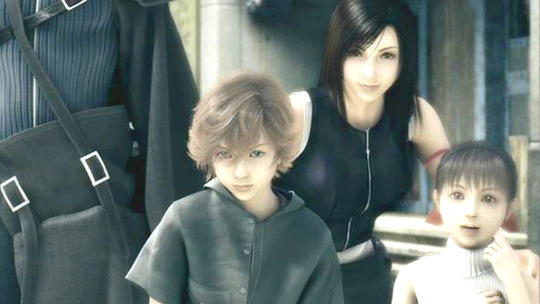
We have now travelled through the first subphrase of the intro.

youtube
We begin Subphrase Two with our opening tonic again, but this time in a quite surprising extension. Rather than adding a happy 7th or 9th to accentuate the warmth of our home chord, Uematsu-san gives us an E note which clashes with our F. Moreover, he builds the chord from this E as the bass (bottom) note.
What does this mean? Dissonance. Home is re-emphasized, but now directly with mournfulness. Although Tifa’s burdens are locked in her heart, they are ever lingering in the picture.
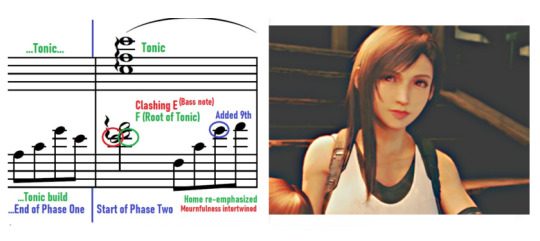
Compare this tonic (with the clashing E) to our opening tonic in Subphrase One. We now also have an additional climb in the harmony, which includes an added 9th. So while we can more deeply sense Tifa’s mysterious burdens (even though she’s our place of peace), extra emphasis is placed on her warmth and motherliness.
Subphrase One opening vs. Subphrase Two opening:
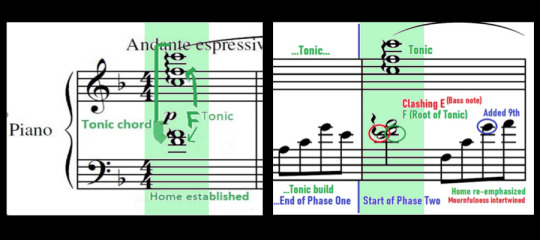
And so we continue Subphrase Two, following the pattern from Subphrase One. A chromatic chord follows the tonic – again ‘borrowed’ from the key of F minor – bringing Tifa’s plights to bubble once again. But before we can linger on them, we are taken back to an extended tonic chord – this time with an ‘unbelonging’ note.
From the next bar, however, things begin to shift…

Before moving onto this shift, let’s consider what we’ve covered so far. We began “at once full of peace and joy” (Tifa’s warmth pulled us toward her, pulled us home), to be immediately carried into an expression of suffering (Tifa’s secret, unsettling burdens were glimpsed). That suffering was overpowered – but not entirely suppressed – by a magnified emphasis of home (Tifa locked her burdens away behind her nurturing kindness). The suffering surfaced briefly again, and again home was accentuated (Tifa’s endless heartache continues beneath the bounds of her love).
As is very clear by now, Tifa is facing great internal conflictions. Let us dig into what the music so far has conveyed of those conflictions.
Spoken in long-value notes, our Subphrase One melodic chords convey: our peace when we are with Tifa; and Tifa’s hesitance in expressing her burdens. That they shift and waver between tonic and chromatic conveys her uncertainty.
Subphrase One conveying hesitance (in long-value notes):

Subphrase One conveying uncertainty (tonic > chromatic > tonic):

Tifa is longing to confront Cloud with the truth of his psyche. At the same time, she is uncertain of both what that will bring and what the truth is: she fears losing Cloud; and she doubts the validity of her own memories from the events he is recounting so accurately. These hesitancies, fears and doubts are gnawing at her heart, buried from the rest of the world under the forefront of home.
Subphrase Two contains less long-value notes and more wavering than Subphrase One, building the intensity of Tifa’s conflicts clashing within her. Rather than wavering from tonic to chromatic to tonic, we go from a dissonant tonic to a chromatic chord to a tonic with chromaticism to more tension in a predominant chord. I’ll get to what this means in the next post, but for now, just know it is a chord of tension.
Subphrase Two (less the final bar) building instability:

Following our new tension chord (the predominant G minor in blue) we have just one bar left to end the phrase. As it is the end of the intro as a whole, we expect to return to the tonic. But (bless Uematsu and his subversions)… the opposite happens.
Our ears expect resolution, but we are instead dragged right into the highest point of tension. Here, we are pulled into the world of the dominant chord.
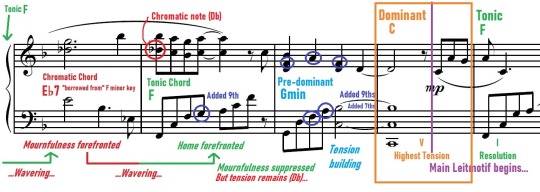
Continued in Part II here.
#final fantasy#final fantasy vii#final fantasy 7#ffvii#ff7#advent children#nobuo uematsu#tifa lockhart#cloud strife#sephiroth#avalanche#cloud x tifa#cloti#music analysis#character analysis#my deep dives
27 notes
·
View notes
Note
have you heard of and/or do you have a take on the gun theory?
unfortunately.
ok. my introduction to the g.u.n. theory occurred when somebody tagged the the narnia post ‘rwby gun theory’ and i went “the hell is that” and promptly found out.
that was two years ago jesus christ
since then it has occupied the dragon’s hoard of spurious fandom bullshit i keep in my brain to provide enrichment for my flock of scathing little carrion bird thoughts. i haven’t talked about it here because i do actually make an effort to be civil.
so.
the g.u.n. theory is underpinned by a fundamental misunderstanding of symbolism and allusion. both misunderstandings arise from the same analytical error, which is the presupposition that the text is written in code. it is, so to speak, a cryptographic reading.
before getting into the weeds i will say this: as a writer, i find this cryptographic approach genuinely a little offensive in, like, an “if you even look at my writing i will beat you to death and then eat you alive” knee-jerk fuck you kind of way. and that’s because this:
a theory that there is a second, completely different interpretation of RWBY from the apparent and generally accepted one […] that RWBY contains many, many more allusions than the creators let on. [they] are intentionally hiding these allusions […] by layering them, so that something that alludes to one thing on the surface also alludes to something else on a level beneath that, resulting in the audience easily seeing the top-level allusion but missing the lower level allusion- or allusions- unless they are paying very very close attention. [ src. ]
is fucking insulting. it is anti-storytelling. the point of a story is to tell a story, not to obfuscate itself by encoding the secret ‘real’ story in the proverbial fucking blue curtains. storytelling is communicative. storytellers WANT you to understand the story, the telling, that is the whole entire fucking point. symbolism is not a secret code. it’s a flag. it’s a trail-marker. it’s a tool for guiding attention and helping the audience connect the dots.
sometimes it’s accidental because writers make subconscious connections or just repeat a motif a lot for aesthetic reasons. (<- my thing is birds. if you’ve ever read bitter snow and wondered why everything is birds it’s because i just think that birds) sometimes it’s on purpose and sometimes it is On Purpose. but it is never, ever there to tell a secret hidden story that is not the story the story appears to be. stories say what they mean and mean what they say.
yes even allegories, fables, satire, et cetera. subtext is not “”hidden meaning“” it’s just narrative information conveyed implicitly. theme is not “”hidden meaning“” it’s the abstract ideas realized through the narrative. these are things the audience is supposed to pick up on, even if they lack the analytical skill to identify and articulate precisely how or why and even if they don’t consciously recognize it. storytellers want you to get it.
ok? ok.
takes off the writer hat.
the g.u.n. theory—like all cryptographic readings—begs the question. it’s a “method of further appreciating, understanding and even predicting the events of [RWBY]” by examining the story “as a confluence of dozens of familiar fantasy and fictional narratives and influences” because the story is actually something “completely different” from what it appears to be. the g.u.n. theory purports to excavate the deeper real story from the obfuscating “surface” story, which is an obviously insane thing to do unless you first accept the premise that the actual text—the things the characters do and say on the screen—is not what the story is.
the g.u.n. theory requires that “what happens in star wars?” is more relevant to interpreting rwby than “what happens in rwby?”
that is ludicrous. it is facile. it’s nonsense.
it would be nonsense even if the g.u.n. theory limited itself to genuine allusions (like ‘the marvelous land of oz’), because while rwby is retelling marvelous land pretty fucking overtly, you do in fact have to read marvelous land in context with a) what happens in rwby and b) specifically how rwby leverages marvelous land to construct its own story, which means you also need to read it in context with the other core allusions (maiden-in-tower tales, the little prince, cinderella) and the way the rwby narrative fits the pieces together. if that sounds complicated yes, but also no, because rwby is really very straightforward about it.
but the g.u.n. theory is the brainchild of people who think the core allusions are [checks notes] lord of the rings, star wars, avatar: the last airbender, fullmetal alchemist, and sailor moon. that the atlas arc is based on the lion, the witch, and the wardrobe (on this see The Narnia Post). that salem’s primary character allusions are the wicked witch of the west, sauron, cinderella’s evil stepmother, emperor palpatine, two presumably villainous fullmetal alchemist characters, and inexplicably maleficent?—but notably NOT rapunzel / persinette / petrosinella despite her being, yanno, explicitly the girl in the tower.
looks into the camera like i’m on the office.
what is happening here—this becomes obvious the instant g.u.n. theorists construct an argument for an allusion—is a conflation of common tropes and archetypes with narratively meaningful allusion. thus, “winter is jadis because she enters in a fancy airship, wields a sword and a smaller sword that kind of looks like a wand, there’s a stone lion-head fountain in this one scene, she’s short-tempered, and she’s from the frozen polar kingdom that oppresses the animal people” which is, um, stupid.
i am like five fucking thousand words deep in comparative analysis of salem and job arguing that rwby is a jobian narrative and i will still asterisk the book of job to hell and back as probably not a deliberate allusion because the comparison relies so much on subtext and i am waiting (very! patiently!) for salem to start talking before i’ll commit to arguing for intention. there are people who are convinced winter is jadis because her main gauche vaguely resembles a wand and she’s from the polar kingdom and, like, presents as an archetypal Ice Lady.
i just—
snarls. see the narnia post.
the point is that the g.u.n. theory’s analytical framework is both explicitly countertextual (the text is not the story) and interested in aesthetics and archetypal similarity almost to the exclusion of everything else.
joseph campbell would be proud.
that interest in aesthetics, combined with the g.u.n. theory’s cryptographic approach to analysis, is why prognostication guided by the g.u.n. theory turned out wrong with stunning regularity, and also why there are g.u.n. theory posts out there that make nonsense claims like “x symbol and y symbol have the same meaning and are interchangeable because they resemble each other and are connected to the same character” (<- snarls in ‘the broken moon = the burning rose’).
i’m glad V8 put it in the ground because if i had seen g.u.n. theorists babbling nonsense about alice in wonderland during V9 i would have been unkind
29 notes
·
View notes
Text
Exploring the Enchanting World of "Goblin" (Guardian: The Lonely and Great God)
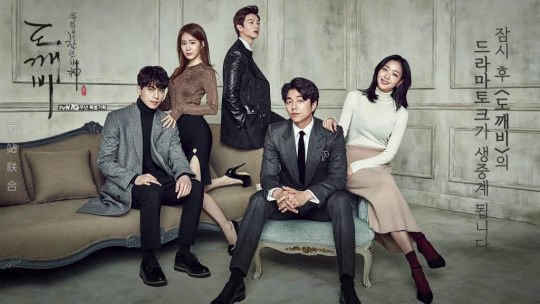
youtube
Goblin, officially known as "Guardian: The Lonely and Great God", is a South Korean television drama that has captured the hearts of millions since its debut in December 2016. Created by Kim Eun-sook and directed by Lee Eung-bok, this fantasy romance series has left an indelible mark on the world of K-drama with its unique storyline, captivating characters, and stunning cinematography.
In terms of genre, "Goblin" falls into several categories, including fantasy, romance, melodrama, and supernatural. It blends elements of romance and fantasy with a touch of humor and poignant storytelling.
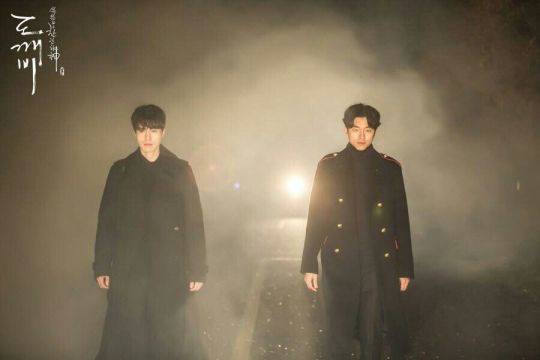
Plot Overview
The series follows the story of Kim Shin, played by the charismatic Gong Yoo, a 939-year-old goblin who has lived an immortal life. Kim Shin was once an unbeatable general in Goryeo's military who was betrayed and killed by a jealous young king. Cursed with immortality, he lives through the centuries awaiting a human bride who can pull out the sword embedded in his chest, ending his eternal life. Enter Ji Eun-tak, portrayed by the talented Kim Go-eun, a high school student with a tragic past who has the rare ability to see ghosts. Eun-tak is revealed to be the "Goblin's bride," and her presence brings new meaning to Shin's existence. Their lives intertwine in a fateful, romantic, and often humorous journey that transcends time and destiny.
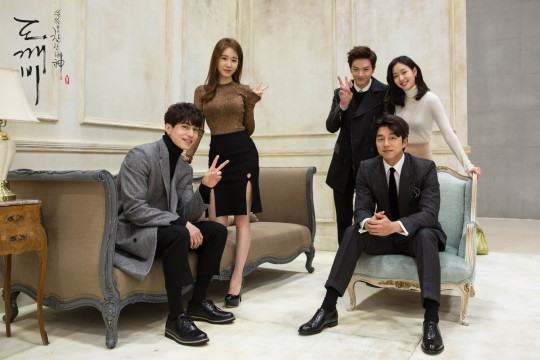
Key Characters and Their Dynamics
1. Kim Shin (Gong Yoo): As the titular Goblin, Gong Yoo delivers a masterful performance, embodying both the gravitas of an ancient warrior and the charm of a man experiencing life anew. His character is both tragic and endearing, seeking solace and redemption through love.
2. Ji Eun-tak (Kim Go-eun): Kim Go-eun's portrayal of Eun-tak is heartfelt and genuine. Despite her hardships, Eun-tak remains optimistic and resilient. Her relationship with Kim Shin evolves from a chance encounter to a profound love story that defies the bounds of time.
3. Grim Reaper (Lee Dong-wook): The Grim Reaper, whose true identity and past are revealed gradually, adds depth to the narrative. His friendship with Kim Shin and his own love story with Sunny, Eun-tak’s boss, provide parallel plots that enrich the series.
4. Sunny (Yoo In-na): Sunny, a quirky and beautiful restaurant owner, becomes entwined in the supernatural world due to her connection with the Grim Reaper. Her character adds warmth and complexity to the storyline.
Themes and Visuals
"Goblin" is a rich tapestry of themes such as love, redemption, and the human condition. The drama explores existential questions about life and death, fate, and the pursuit of happiness. The use of poetic dialogue and philosophical musings sets it apart from conventional dramas.
Visually, "Goblin" is a feast for the eyes. The series is renowned for its breathtaking cinematography, blending the beauty of natural landscapes with intricate urban settings. The visual effects, particularly the scenes involving the goblin's supernatural powers, are both seamless and mesmerizing.
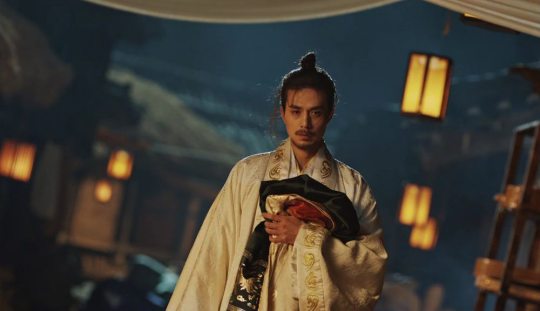
Cultural Impact and Legacy
"Goblin" has become a cultural phenomenon, not just in South Korea but globally. Its unique blend of romance, fantasy, and humor has struck a chord with audiences. The drama's OST (Original Soundtrack) also gained massive popularity, with songs like "Stay With Me" by Chanyeol and Punch becoming instant hits. The chemistry between Gong Yoo and Kim Go-eun is palpable, and their performances have been widely praised. The series has won numerous awards and continues to be a favorite among K-drama enthusiasts.
youtube
The soundtrack of the Korean drama series "Goblin" (also known as "Guardian: The Lonely and Great God"), which starred Gong Yoo and Kim Go Eun, is widely celebrated and has significantly contributed to the show's success. The OST (original soundtrack) is known for its emotional depth, beautiful melodies, and poignant lyrics, complementing the series' themes of love, fate, and immortality. Here are some notable songs from the soundtrack:
"Stay With Me" by Chanyeol and Punch:
This song is arguably the most popular track from the series. Its haunting melody and emotional lyrics capture the essence of the relationship between the main characters. The combination of Chanyeol's deep voice and Punch's ethereal vocals creates a memorable and moving piece.
"Beautiful" by Crush:
"Beautiful" is another standout track that highlights the poignant moments of the drama. Its simple yet powerful melody and heartfelt lyrics make it a perfect backdrop for the tender and bittersweet scenes between the characters.
"Hush" by Lasse Lindh:
This song adds a touch of indie charm to the soundtrack. Its soothing tune and delicate vocals enhance the emotional atmosphere of the series, particularly in scenes that explore the quieter, more introspective moments of the characters.
"I Will Go to You Like the First Snow" by Ailee:
Ailee's powerful and emotive voice shines in this song, which became a massive hit. The lyrics express the longing and enduring love that are central themes in "Goblin." This track often accompanies some of the most dramatic and emotional scenes in the series.
"Round and Round" by Heize and Han Soo Ji:
This song features a mystical and haunting quality that perfectly matches the supernatural elements of "Goblin." Its atmospheric sound and evocative lyrics make it a memorable part of the OST.
"Who Are You" by Sam Kim:
This track has a soulful and reflective vibe, adding depth to the soundtrack. Sam Kim's smooth vocals and the song's introspective lyrics resonate with the character's journeys and their search for identity and purpose.
The "Goblin" OST is renowned not only for its musical quality but also for how well it integrates with the storyline, enhancing the viewing experience. Each song is carefully selected to reflect the emotions and themes of the drama, making the soundtrack a beloved aspect of the series for fans.
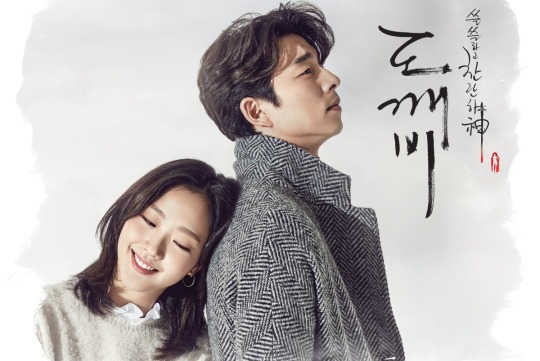
Goblin" is more than just a television series; it's an experience that lingers long after the final episode. Its compelling narrative, unforgettable characters, and stunning visuals make it a must-watch. Whether you're a seasoned K-drama fan or new to the genre, "Goblin" offers a magical journey that is both heart-wrenching and heartwarming.
Honest Comment: When I first saw this series I was like "hmm not my genre" because of the look of the series but when I watched it I was amaze because of the act of the actors especially Kim Go Eun she is amazing, she executes her character very well. I love the cinematic of the series you can feel the vibe , the emotions and everything you can feel about it. I love the plot of the series. There is one episode that made me cry like a baby I can feel the emotions of Kim Go Eun character her feeling towards to her partner and the plot with the Grim Reaper he is one of my favorite the story, the emotions, and the facial expression it is like he is talking to me, but I will not forget Gong Yoo's character he did his character so well that no one could replace it. This series makes my heart happy and sad especially when I hear their songs it can touch you heart. Big thumbs up for this Series. This will always be my top tier korean drama series.
9 notes
·
View notes
Text
Journeys in Creativity—My Path as a Writer, Musician, and Content Creator
All text copyrighted ©️ 2024 by Lancer Gareth Bailey
Every word I write is a step on a journey that began in my childhood, a path that has shaped not only my stories but the person I’ve become. My passion for storytelling began in childhood, when I would fill spiral notebooks with short stories. As a teenager, I was fortunate to have my work recognized with several awards, which encouraged me to keep pursuing my creative interests. At 17, I was honored to become a published author after winning a college writing competition while still in high school.
Since then, I’ve followed a multifaceted path, exploring various creative outlets. Building on my early literary achievements, I’ve had the opportunity to grow as a record-producing musician, a self-published novelist, content creator, and business owner.
I’m thrilled to share my journey with the readers of the Authors’ Lounge. Writing has always been a deeply personal and transformative experience for me, and I’m excited to take this opportunity to reflect on the path that has brought me to where I am today. From my early days of scribbling stories in notebooks to my current endeavors as an author and creator, each step has been a part of a journey I’m proud to share with you.
I began writing at age 15, but my journey to becoming a writer started a bit earlier, rooted in a challenge I faced during Middle School. My teachers believed I was lagging behind my classmates in reading development and wanted to place me in a remedial reading class. The truth was, I wasn’t struggling with reading itself—I was struggling with anxiety.
I was a slow reader, easily distracted, often needing to re-read paragraphs multiple times before continuing. The thought of reading aloud in class terrified me. My mother, a middle school teacher and writer, recognized what I was going through. Instead of letting the anxiety define me, she encouraged me to read more, and she also bought me stacks of notebooks to write in.
Writing quickly became my refuge, a way to channel my anxieties into something creative and constructive. I discovered that I had a natural talent for creative expression, and in many ways, my writing became an act of defiance against the anxieties that once held me back. What began as a way to cope with my struggles soon blossomed into a passion that continues to drive me today.
My writing style has evolved significantly over the years, influenced by my changing interests and life experiences. I started off writing suspense and horror short stories, heavily inspired by the books I was reading at the time—authors like Stephen King, Dean Koontz, and Michael Crichton. These early works were dark and intense, reflecting my fascination with the unknown and the macabre.
As I progressed through high school, I began to explore new genres, venturing into the realms of science fiction and fantasy. Reading J.R.R. Tolkien, C.S. Lewis, Philip Pullman, Roger Zelazny, and H.G. Wells opened my mind to new possibilities in storytelling. My narratives began to incorporate more fantastical elements, blending the real with the surreal in ways that allowed my imagination to run wild.
In college, my studies in Archaeology and History further enriched my writing. I became deeply interested in weaving historical and archaeological elements into my narratives, grounding my stories in real-world settings while still allowing room for speculative fiction. This academic background added depth to my work, enabling me to create stories that were not only entertaining but also thought-provoking and informative.
Coming out as gay at the age of 19 was another pivotal moment in my life. Over the years, as I embarked on a journey of self-discovery, I realized that the most authentic expression of my creativity came when I combined all these elements—horror, fantasy, history, and personal identity. My writing became a way to explore not only external worlds but also my internal one, allowing me to tell stories that resonate on multiple levels. Each story I write is a reflection of my experiences, my influences, and my journey toward understanding myself and the world around me.
As I moved into adulthood, I began branching out and experimenting with other forms of creative expression. In my mid-20s, I joined a band and immersed myself in the world of music. This new venture was a significant departure from my earlier focus on writing, but it allowed me to explore creativity in a completely different medium. I taught myself to play several musical instruments and poured my writing skills into drafting song lyrics and composing music.
While our band didn’t achieve widespread success, we did manage to release an album before eventually going our separate ways. This experience was pivotal, not just in terms of creative growth, but also in my ongoing battle with anxiety. Standing on stage, performing music I had helped create, was an intense and often nerve-wracking experience. But it was through these challenges that I began to conquer the personal obstacles that had been holding me back for so long.
This process of self-discovery and creative experimentation profoundly influenced my writing. It gave me new tools for expression and a deeper understanding of how to convey emotion and narrative in ways that resonate with others. Ultimately, it was through these experiences that I was able to claim victory over many of the personal barriers that had once seemed insurmountable, unlocking my true potential as a writer and creator.
Since those years, I have returned to my truest passion: writing stories. My newest book Lost and Found in the Andes is now available in hardcover, paperback, and Kindle eBook on Amazon’s website at:
https://a.co/d/0fX0xNh8

Embark on an exhilarating journey with Carmelo Quiñones De La Cruz, a celebrated gay romance novelist writing under the pseudonym Cameron Quinn, and his enigmatic companion Alejandro (Alex), as they plunge into the enigmas of an ancient Incan treasure hidden deep within the majestic Andes Mountains of western Argentina.
The adventure begins when Carmelo’s sister is abducted just as a cryptic map surfaces, believed to have been crafted by the legendary Spanish Conquistador Jerónimo Luis de Cabrera. This discovery ignites a thrilling escapade fraught with peril, deception, and unexpected passion. As Carmelo and Alex decode the arcane symbols on the map, they unravel a saga of conquest, avarice, and the relentless pursuit of supremacy, taking the reader on a gripping journey through treacherous landscapes and the intricate dance of trust and betrayal.
Throughout their journey, the past and present collide as Carmelo and Alex confront their own burgeoning emotions. Navigating the challenging currents of desire, they find themselves drawn closer together, even as the trials of their expedition threaten to tear them apart. Guided by the whispers of history, they race against time to unlock the secrets of the Incan treasure before it falls into the wrong hands.
But their quest isn’t just about riches; it’s also driven by a deeper, more personal mission: rescuing Carmelo’s kidnapped sister and bringing justice to those who seek to harm them. Will their journey yield the fabled riches of the Andes, or will they discover a different treasure altogether—a love that transcends time and trials?
Lost and Found in the Andes is an enthralling tale of discovery, adventure, and the redemptive power of love amidst the echoes of a forgotten past.
If you find a few of the plot points familiar, that’s because the inspiration for my book traces back to one of my favorite movies from the 80s, Romancing the Stone. That classic film, with its adventurous spirit and romantic undertones, captured my imagination and sparked the idea to create a story that embodies similar elements. However, I wanted to bring something new and original to the table.
My goal was to infuse the story with LGBTQ+ themes and address some of the issues and plot holes I felt were glaringly present in the film that inspired me. By blending the thrilling adventure and romance of Romancing the Stone with a fresh perspective and a focus on diverse representation, I aimed to create a narrative that resonates with modern readers while paying homage to the classic adventure genre.
Through Lost and Found in the Andes, I sought to explore not only the excitement of an epic treasure hunt but also the complexities of relationships and identity. The novel is a reflection of my desire to blend compelling storytelling with inclusive and meaningful themes, offering readers both a thrilling adventure and a story that celebrates diversity and love.
Lost and Found in the Andes has resonated deeply with readers, earning praise for its captivating plot, well-crafted characters, and vivid portrayal of the Andean landscape. One memorable review came from Katelyn H, who gave the novel five stars, calling it an “Interesting Read!” Katelyn elaborated by saying, “This is a mind-catching journey that merges suspense and emotional depths. Its complex plot keeps one on their toes…incorporating thrilling action scenes with emotionally tender moments. Lancer’s vibrant portrayal of the Andean landscape as well as his well-crafted characters lends a palpable feel to the narrative. Furthermore, themes such as resilience and truth-seeking support this backdrop that makes it unforgettable…”
Another stand-out review was from John, who shared his thoughts from the beautiful English countryside. He wrote, “I loved Lost and Found in the Andes. Two wonderful central characters; a glorious landscape; a sometimes terrifying threat looming over the guys—and a gentle romance. A thoroughly satisfying read.”
These reviews, along with others, affirm the impact of Lost and Found in the Andes on its audience, highlighting the novel’s blend of adventure, romance, and emotional depth that keeps readers engaged from start to finish.
Being a writer has been one of the most transformative experiences of my life. Writing is more than just a profession or a hobby; it’s a profound part of who I am. Through the years, it has served as a vessel for self-discovery, a way to confront and conquer my personal challenges, and a means to connect with others on a deeper level.
The journey has been filled with countless moments of introspection, where I’ve been able to explore the depths of my own mind and heart. Crafting stories allows me to share pieces of my inner world with readers, inviting them into the universes I create. Each character, plot twist, and setting is a reflection of my thoughts, experiences, and imagination—offering a unique glimpse into how I see the world.
The impact of writing on my life goes far beyond the stories themselves. It has provided me with a sense of purpose, a channel for expressing emotions, and a way to process the complexities of life. It has taught me patience, resilience, and the importance of perseverance—lessons that extend into every aspect of my life.
Ultimately, being a writer has been about growth—both as an artist and as a person. I am continually evolving, learning, and adapting, and I’m grateful for the opportunities that writing has given me to do so. Whether through the triumphs of publishing a new book or the quiet satisfaction of finishing a draft, writing remains my greatest passion and the truest expression of who I am.
I’m excited to share a couple of projects in the works that I’ve been slowly crafting, each offering something unique and intriguing.
One of these is a cyberpunk adventure graphic novel titled Welcome to New Ultra City. This project is an exotic blend of cyberpunk sci-fi and dark, dystopian fantasy, set in a world where technology and myth intertwine. The story dives deep into a futuristic cityscape where the boundaries between humanity and machinery blur, and where the shadows hold secrets that could alter the fabric of reality.
Another exciting work in progress is my multidimensional fantasy story titled Destiny’s Twin. This epic fantasy spans the multiverse, exploring the timeless battle between good and evil. It’s a classic tale with a twist, serving as a powerful reminder that even the meekest among us have value and can change the course of history.
Additionally, I’m putting the finishing touches on a new novel titled P.O. Box 1142, which I anticipate publishing by the end of September. This historical fiction romance is set within a highly classified POW camp during WWII. The novel delves into the intense and secretive world of wartime intelligence, weaving a compelling story of love, duty, and sacrifice.
For those interested in getting a sneak peek, excerpts from Welcome to New Ultra City and Destiny’s Twin are available on my Tumblr blog. I’ll include the link below for anyone eager to explore these worlds before they fully come to life.
I want to take a moment to express my heartfelt gratitude to everyone who has supported me on this journey. To my readers, your enthusiasm and encouragement are what keep me inspired to continue writing and exploring new creative horizons. Your feedback, whether through reviews or personal messages, has been invaluable in shaping my work and helping me grow as an author.
A special thanks to Authors’ Lounge for providing this incredible platform to share my story. It’s opportunities like these that allow writers like me to connect with new audiences and share the passion behind our work. Your support means the world to me, and I’m honored to be a part of this wonderful community.
In reflecting on my journey as a writer, I’m reminded of how far I’ve come—from filling spiral notebooks with stories as a child to publishing novels that resonate with readers around the world. My work, including Lost and Found in the Andes, is a testament to the power of perseverance, imagination, and the courage to confront one’s fears. Whether it’s through the thrilling adventures of Carmelo and Alex or the upcoming historical romance of Benjamin and Erik in P.O. Box 1142, my goal is always to transport readers into worlds where they can experience both the thrill of discovery and the depths of human emotion.
If you’ve enjoyed learning about my journey, I encourage you to check out my books and follow me on social media to stay updated on my latest projects. Lost and Found in the Andes is available on Amazon, and I regularly share updates, excerpts, and more on my blog and social media.
Links:
Lost and Found in the Andes - on Amazon
3 notes
·
View notes